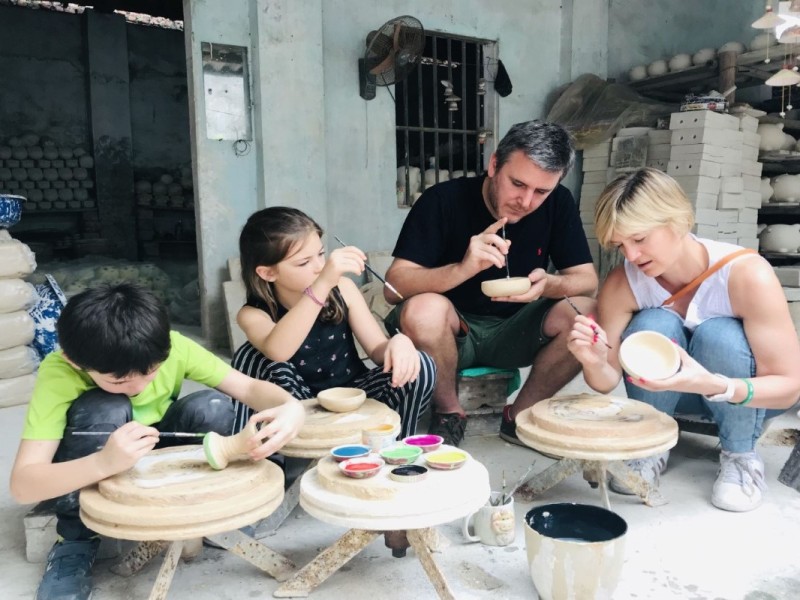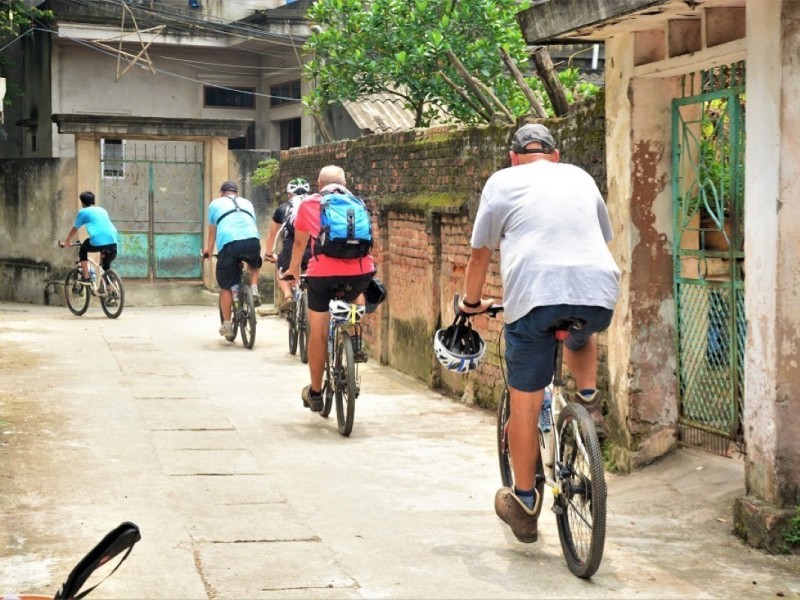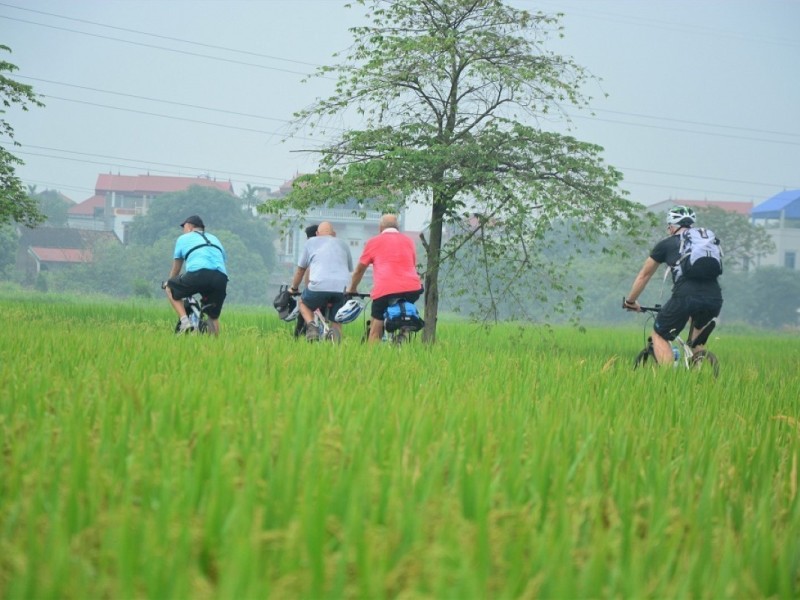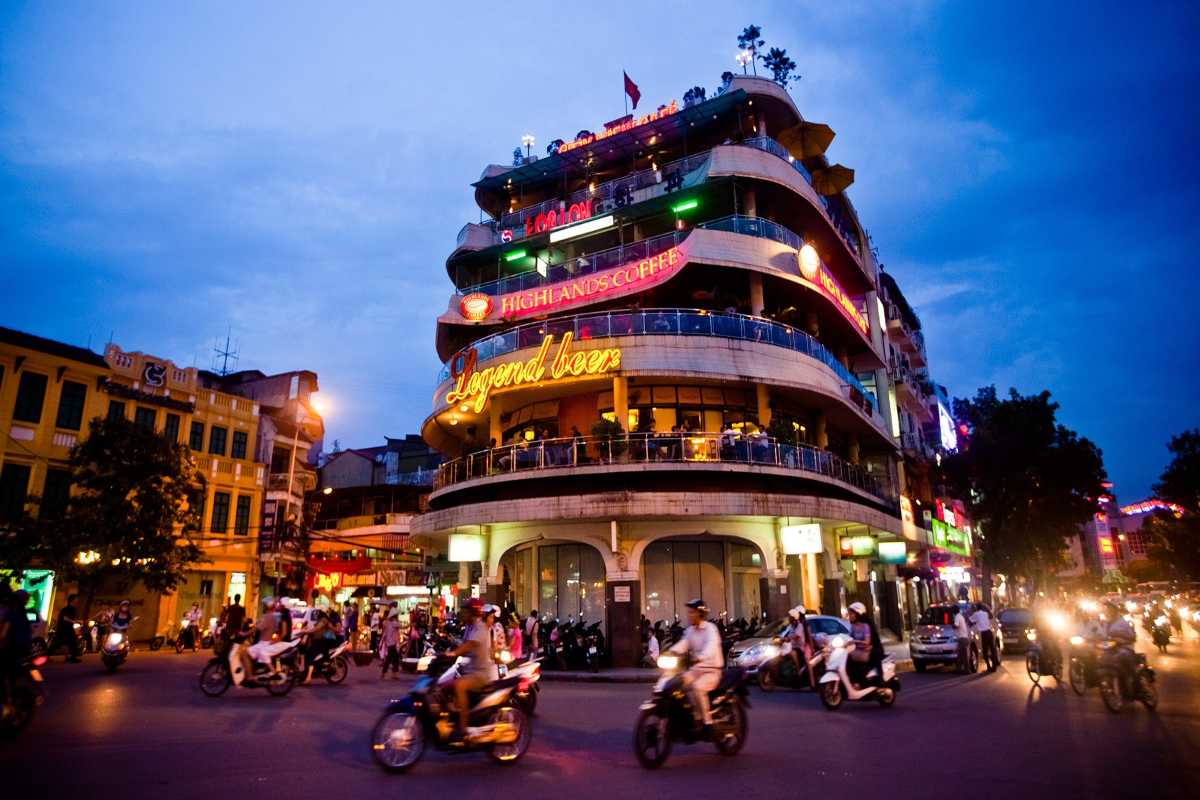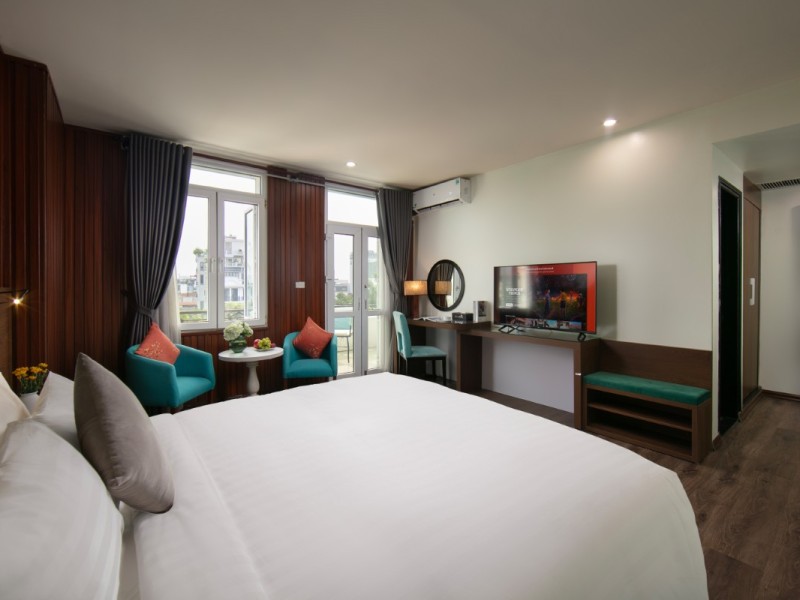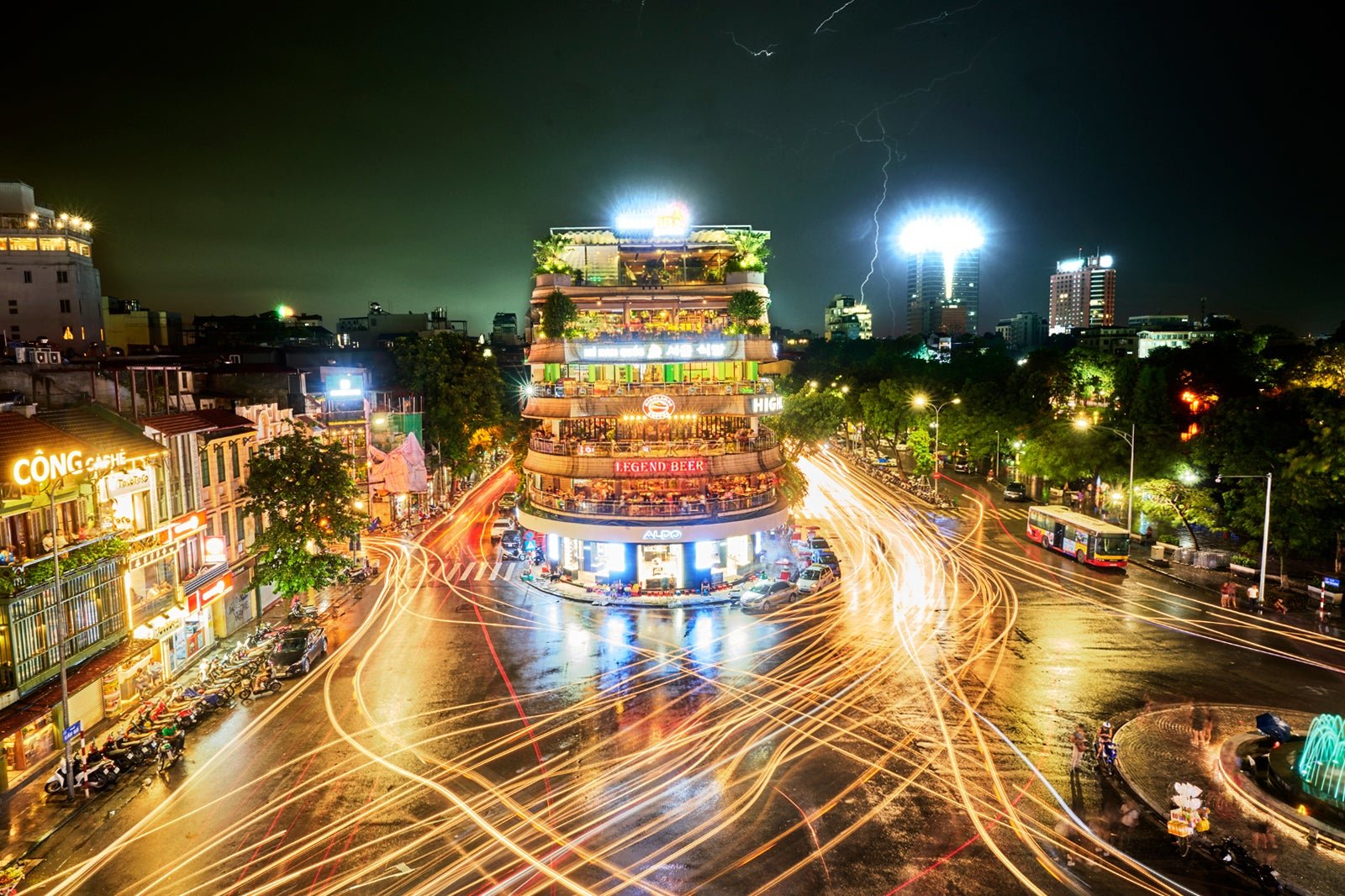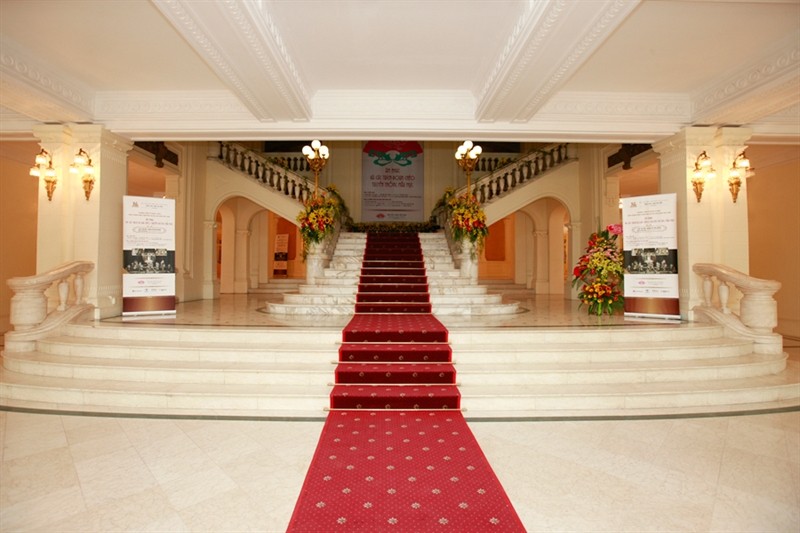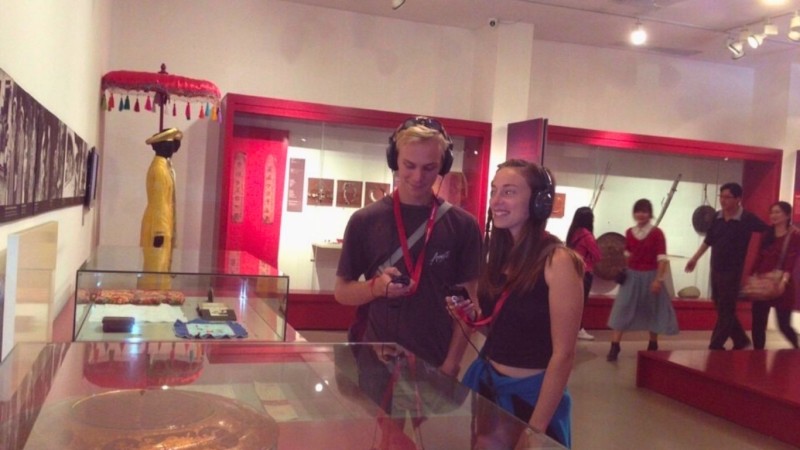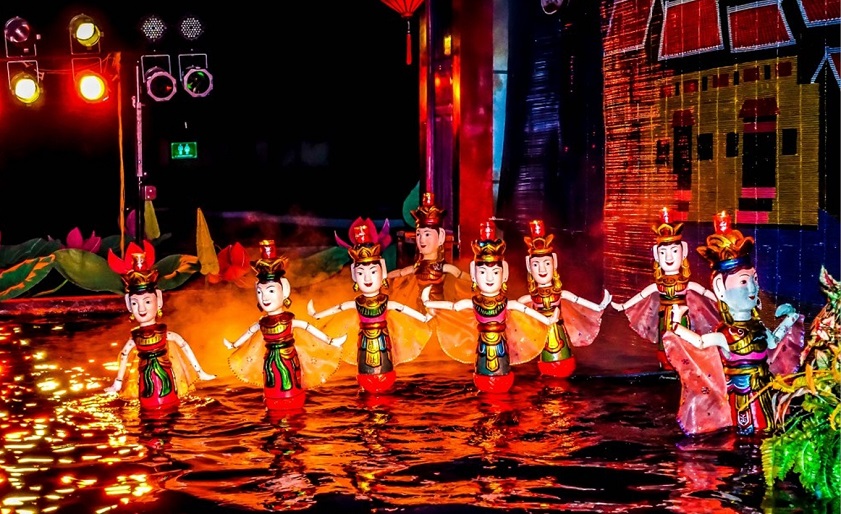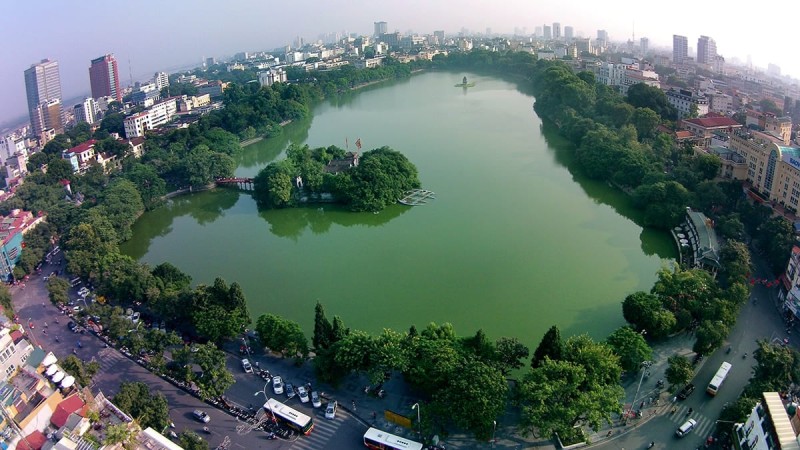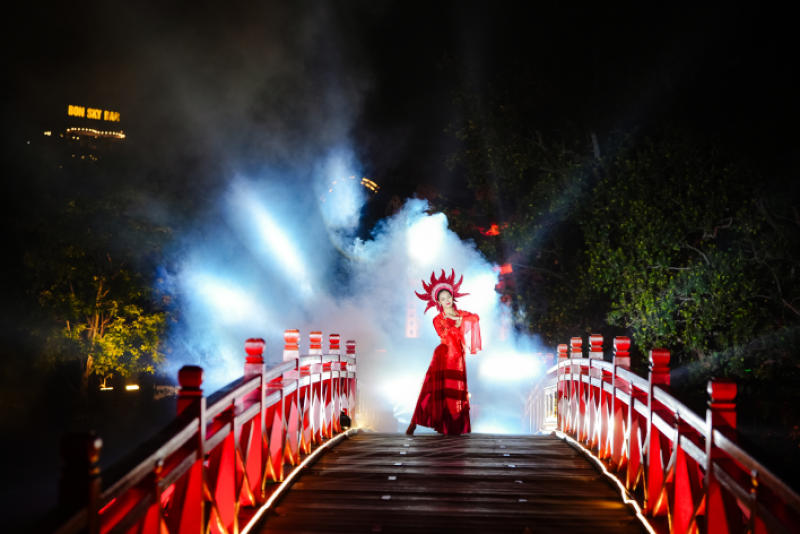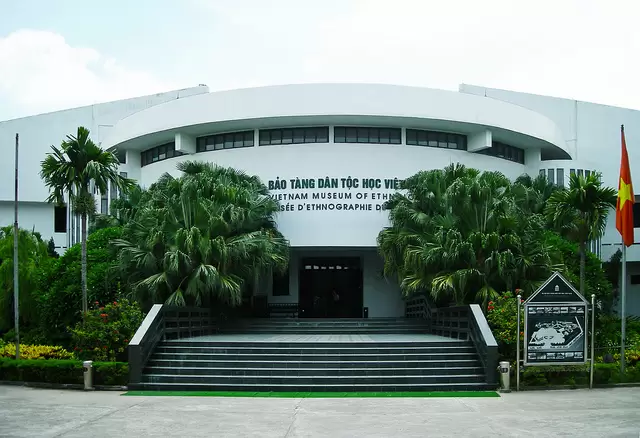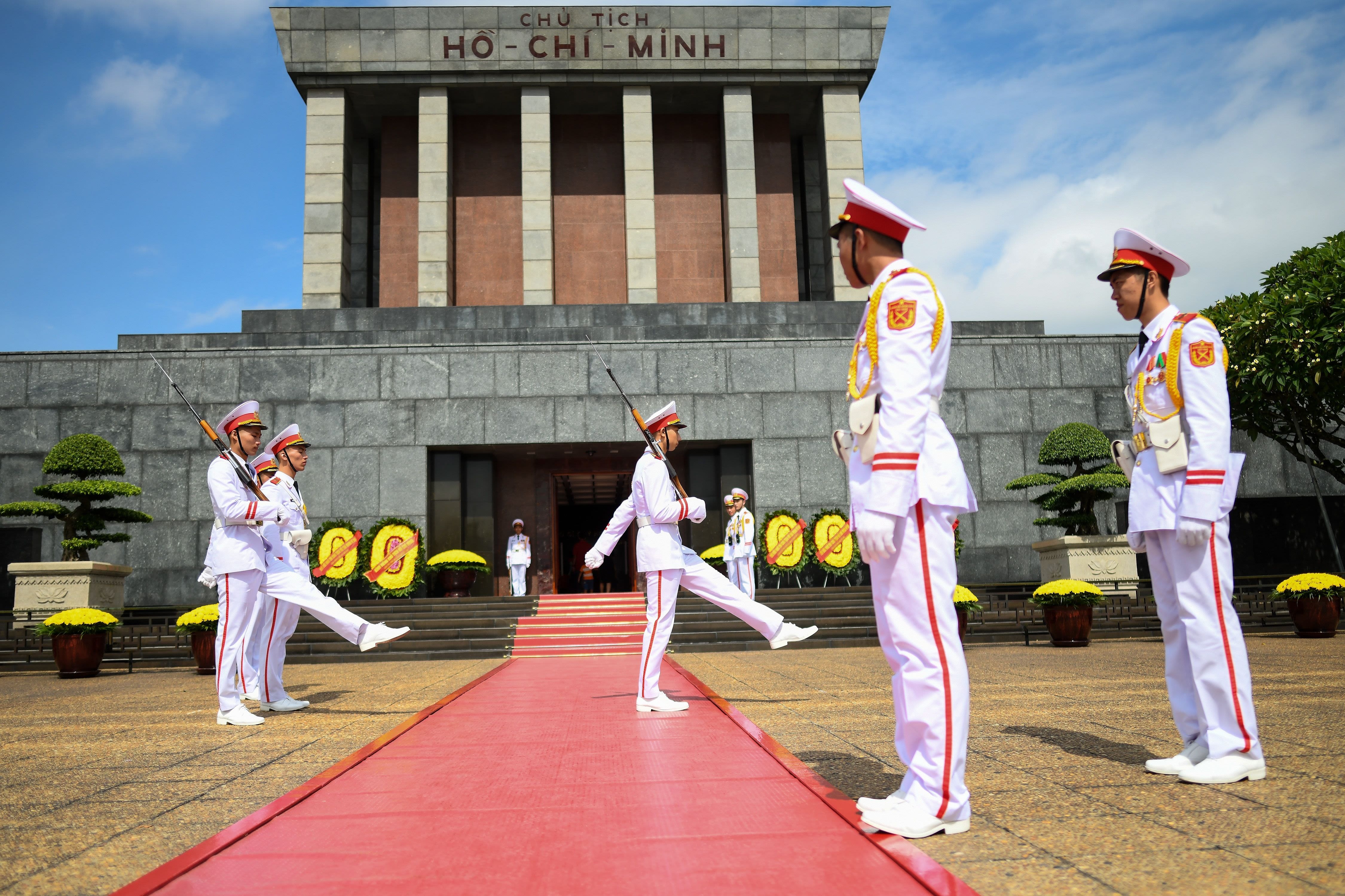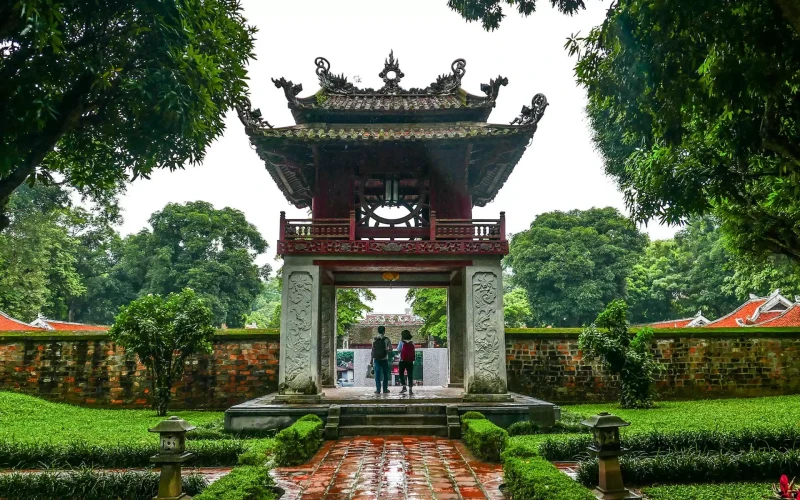One Pillar Pagoda Hanoi: History, Visitor Guide & Travel Tips
September 13, 2024 Museums & Memorial Sites
One Pillar Pagoda Hanoi is a historic Buddhist temple known for its unique single-pillar design resembling a lotus flower. Located in the heart of Hanoi, it offers visitors a glimpse into Vietnam’s rich cultural heritage and traditional Buddhist architecture, making it a must-see landmark.
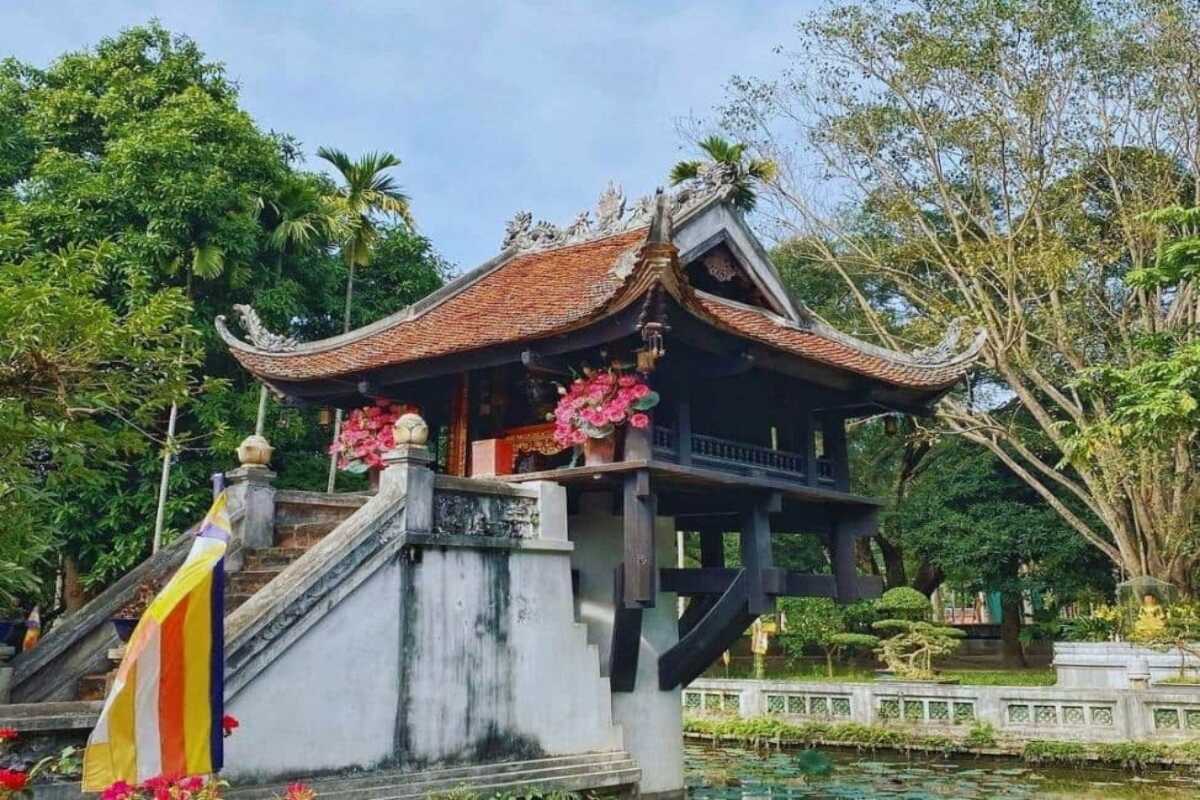
Introduction to One Pillar Pagoda
The One Pillar Pagoda Hanoi is a remarkable historic site famed for its unique architecture and profound cultural significance. Nestled in the heart of Hanoi, this iconic structure stands out as a symbol of Vietnam’s rich spiritual heritage and ancient traditions. Visitors are drawn to its elegant lotus-inspired design and the serene atmosphere that surrounds the temple grounds. As an essential part of Vietnam’s cultural landscape, the pagoda offers a fascinating glimpse into the religious and artistic achievements of the Lý Dynasty. This introduction sets the stage for exploring its history, architectural beauty, and cultural importance. Plan your visit to One Pillar Pagoda Hanoi to experience this emblematic treasure firsthand.
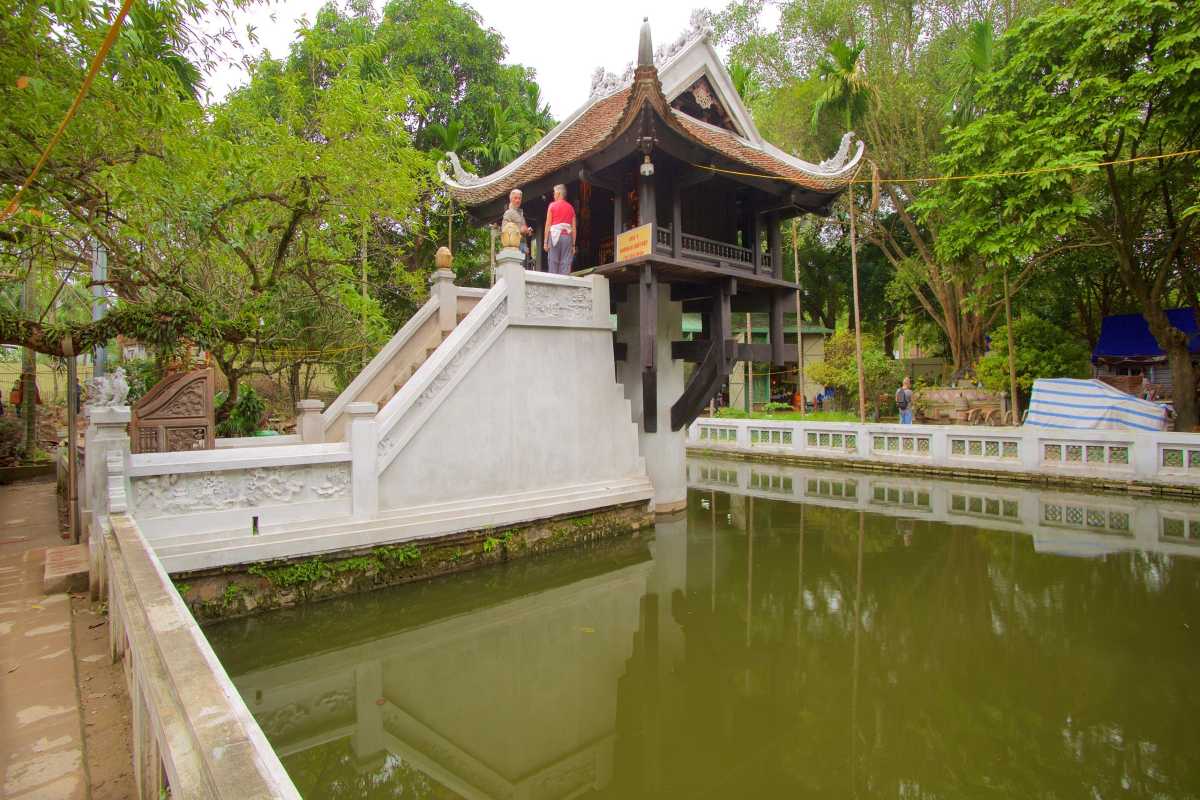
Overview of the Pagoda
The One Pillar Pagoda is best known for its distinctive design—a wooden structure perched delicately on a single stone pillar rising from a lotus pond. This architectural marvel represents a lotus blossom, a sacred symbol in Buddhism that signifies purity and enlightenment. Constructed originally during the Lý Dynasty, the pagoda’s delicate appearance belies the strength and spiritual depth it embodies. Its location in Hanoi places it near several other important landmarks, making it a convenient and must-see site for travelers. The pagoda’s unique style makes it one of the most photographed and visited Buddhist temples in the city.
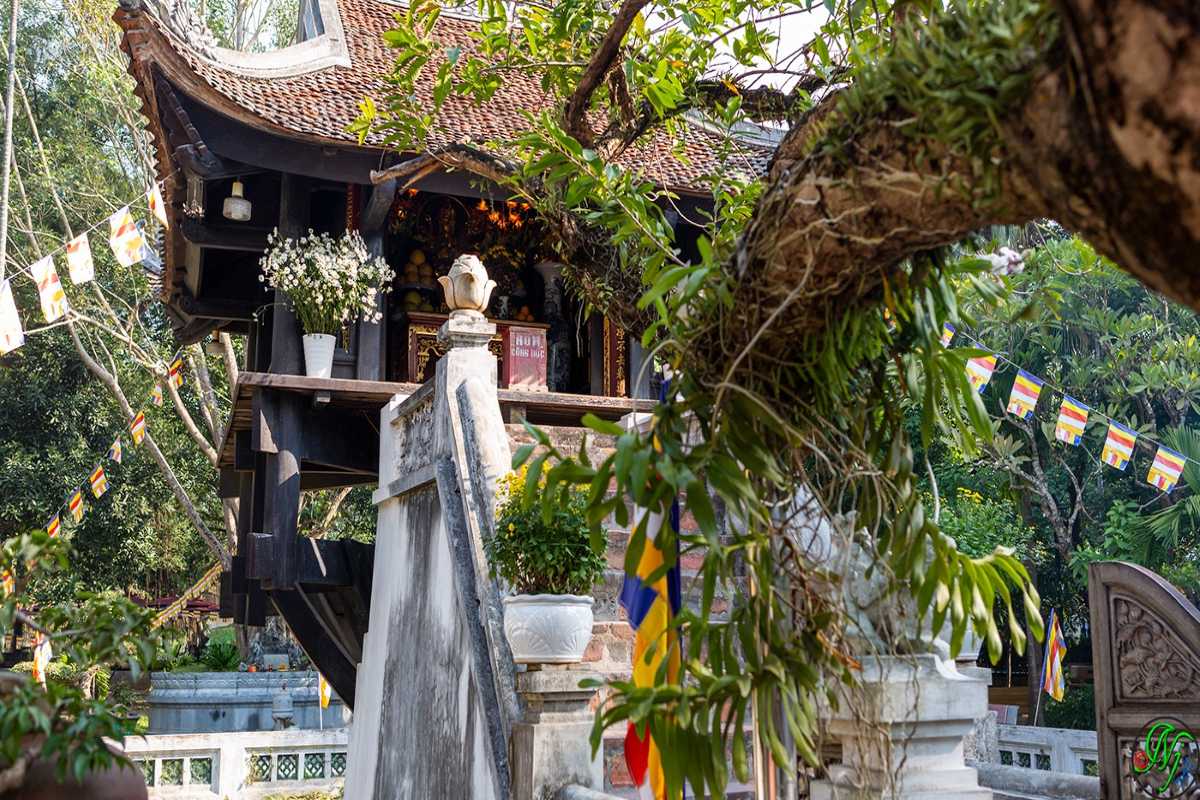
Significance as a Cultural and Historical Landmark
The One Pillar Pagoda holds a revered place in Vietnamese cultural history. It stands not only as a religious site but also as a testament to the spiritual values of the Lý Dynasty era. Its symbolism and historical context connect deeply with the Buddhist traditions that have shaped much of Vietnamese culture. The pagoda’s survival through centuries of change, including colonial disruptions and wars, highlights its importance to local identity and heritage. It is recognized as a historic landmark that continues to inspire spiritual devotion and cultural pride in Hanoi and across Vietnam.
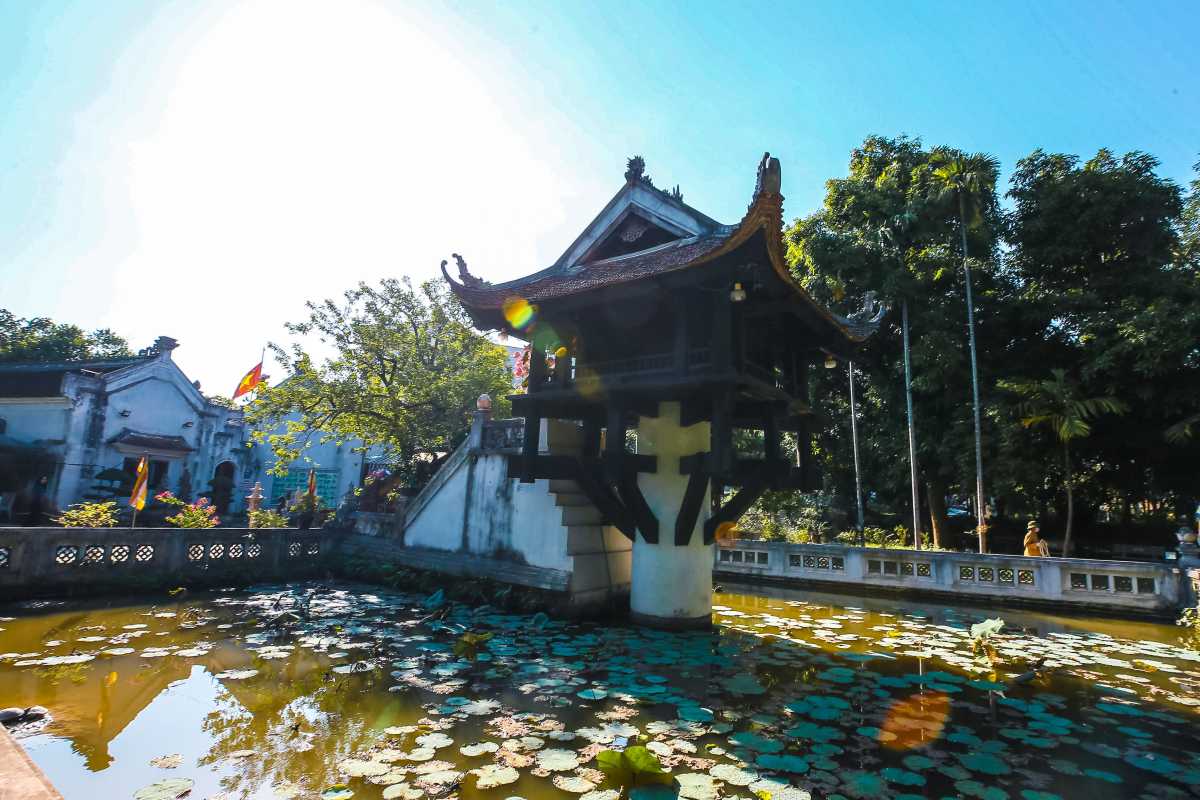
Unique Architectural Features
Among the most fascinating aspects of the One Pillar Pagoda are its unique architectural elements. The pagoda features a single stone pillar supporting a wooden temple structure, symbolizing a lotus flower rising from the water—a powerful Buddhist icon. The design reflects the craftsmanship of the Lý Dynasty, utilizing traditional building techniques with wood and stone. This structure combines elegance with spiritual symbolism, representing purity and enlightenment in its form. The surrounding lotus pond enhances the pagoda’s serene setting, offering visitors a peaceful environment for reflection and photography.
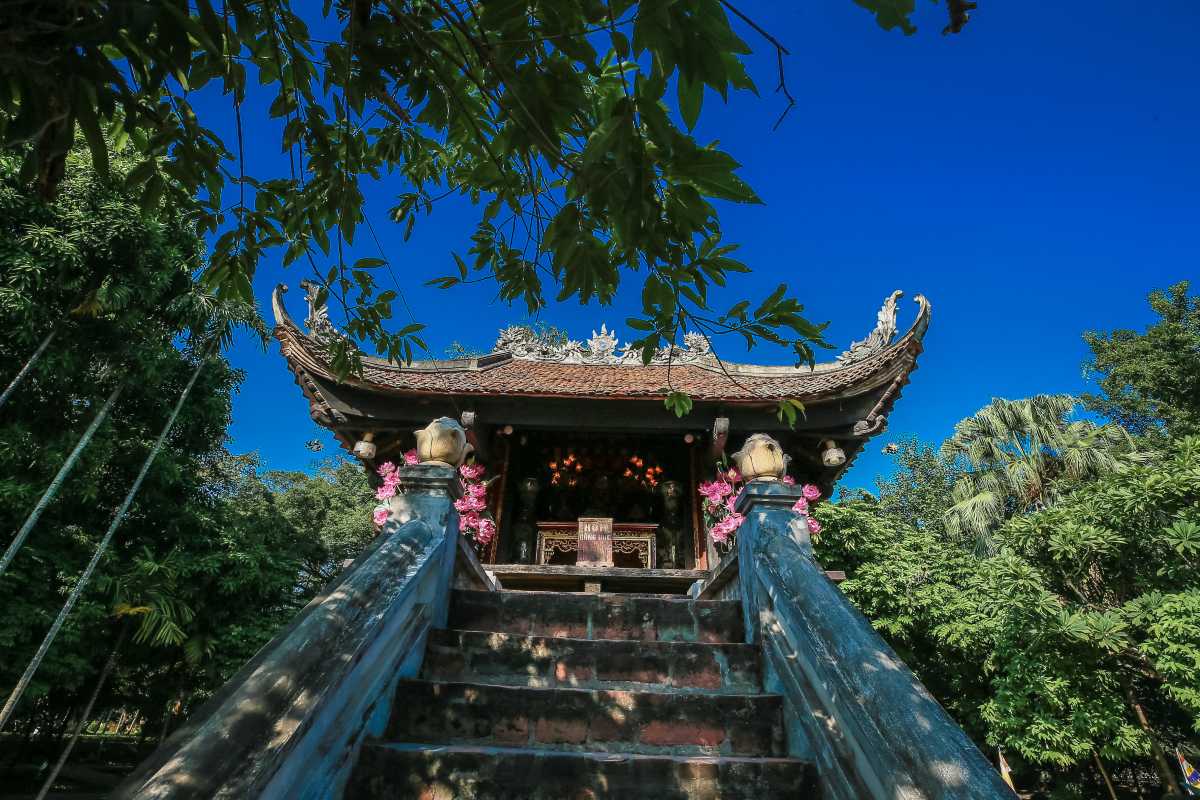
History of One Pillar Pagoda
The One Pillar Pagoda holds a rich history that traces back to the Lý Dynasty in the 11th century, reflecting Vietnam’s deep-rooted Buddhist traditions and cultural heritage. This historic site was inspired by a legend involving Emperor Lý Thái Tông, who dreamed of a goddess handing him a baby while seated on a lotus flower. The pagoda’s unique design symbolizes this dream and serves as a spiritual emblem of purity and enlightenment. Despite suffering damage during the French Colonial Period, the pagoda was carefully restored, preserving its architectural integrity and historical significance. Today, it stands as a vital cultural landmark in Vietnam, offering visitors insight into the country’s dynastic past and religious devotion. Exploring the history of the One Pillar Pagoda enriches your understanding of its importance in Vietnamese culture and Buddhism. Plan your visit to connect with this remarkable symbol of faith and heritage.
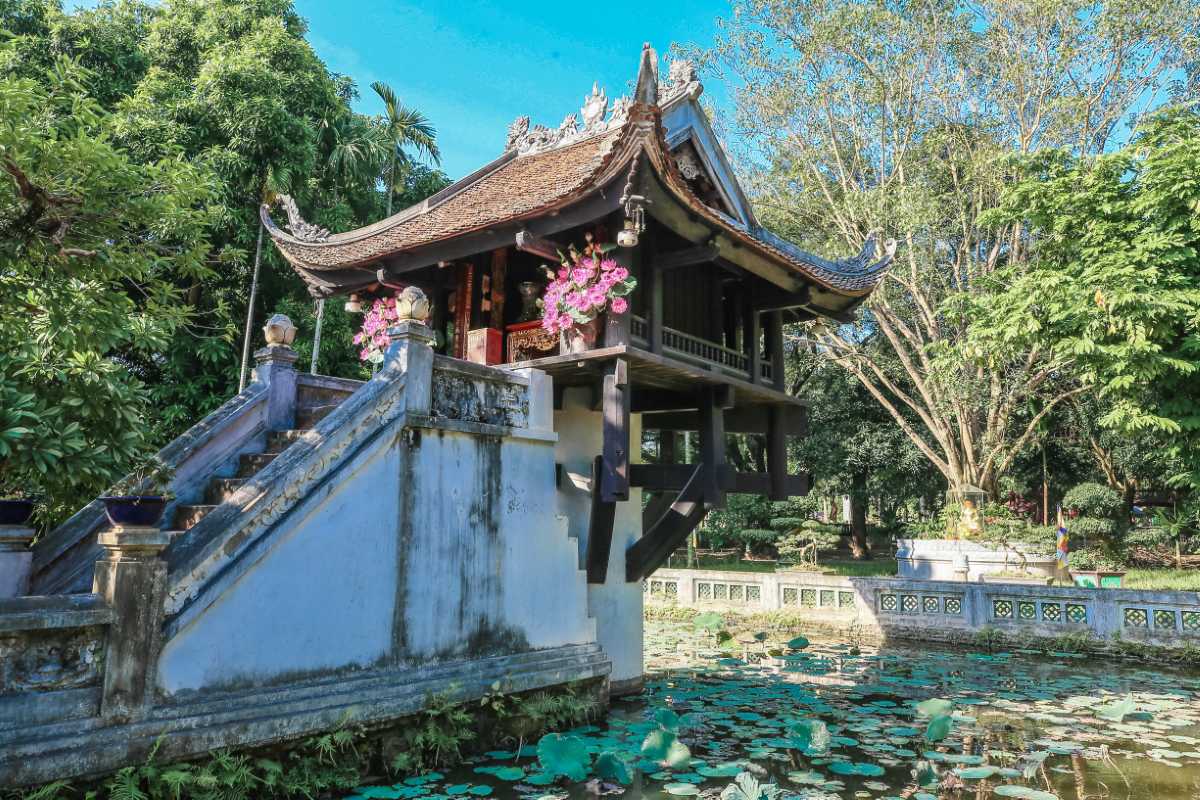
Origins and Legend Behind the Pagoda
The origin story of the One Pillar Pagoda is deeply intertwined with the spiritual vision of Emperor Lý Thái Tông. According to legend, the emperor dreamt of the Bodhisattva Avalokiteshvara handing him a son while sitting on a lotus flower in the middle of a lotus pond. Inspired by this dream, he ordered the construction of a pagoda supported by a single pillar rising from a lotus pond to resemble the vision. This legend imbues the pagoda with profound Buddhist symbolism, representing purity, fertility, and divine blessing. The pagoda’s foundation in this mythic narrative connects visitors not only to architectural beauty but also to spiritual inspiration and Vietnamese folklore, deepening the cultural experience.
Emperor Lý Thái Tông’s Dream and the Lotus Symbolism
The dream of Emperor Lý Thái Tông forms the spiritual foundation of the One Pillar Pagoda. In his vision, a lotus flower appeared on the water, and from it, a divine figure presented him with a son, symbolizing prosperity and continuation of the dynasty. The lotus flower, a central Buddhist symbol, represents purity, enlightenment, and rebirth. This symbolism is reflected architecturally in the pagoda’s design—perched atop a single stone pillar rising from a lotus pond, visually echoing the sacred flower’s purity amidst muddy waters. The pagoda stands as a physical manifestation of Buddhist iconography, connecting visitors to centuries-old spiritual beliefs and artistic traditions.
- Lotus Flower Meaning: Symbolizes purity and spiritual awakening in Buddhism.
- Buddhist Symbols Vietnam: Lotus is widely revered across Vietnamese religious sites.
- Spiritual Symbolism: Represents transcendence and enlightenment.
- Buddhist Iconography: Integral to temple design and religious art in Vietnam.
Visitors fascinated by Buddhist symbolism will find the One Pillar Pagoda a profound expression of these ancient spiritual themes, making it a unique cultural landmark worth exploring.
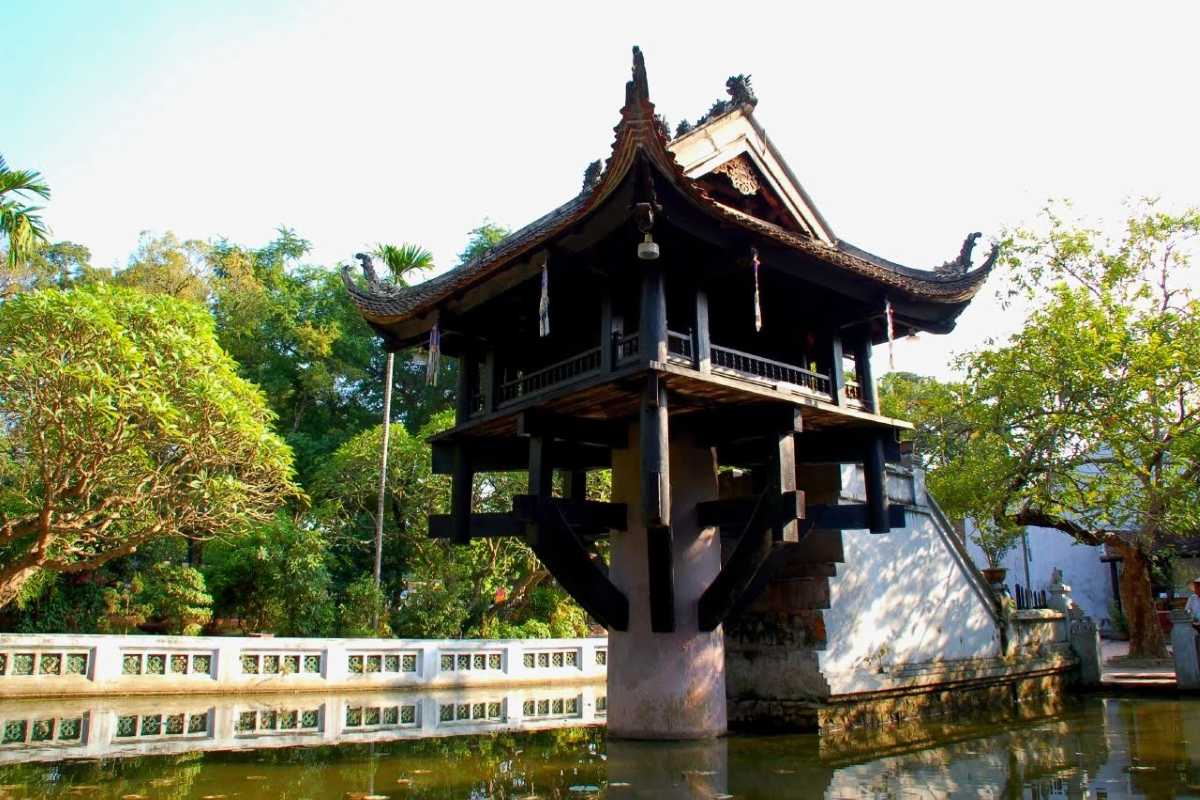
Construction During the Lý Dynasty (11th Century)
The One Pillar Pagoda was originally constructed during the Lý Dynasty in the 11th century, reflecting the era’s architectural innovation and religious devotion. Built to honor the emperor’s dream and the lotus flower symbolism, the pagoda showcases traditional Vietnamese wooden craftsmanship supported by a single stone pillar rising from a lotus pond. This design is an exceptional example of Buddhist architecture in Vietnam during the medieval period, highlighting the Lý Dynasty’s emphasis on spiritual symbolism and artistry. The pagoda’s historical significance is rooted in its unique construction and its role as a religious sanctuary during this formative time.
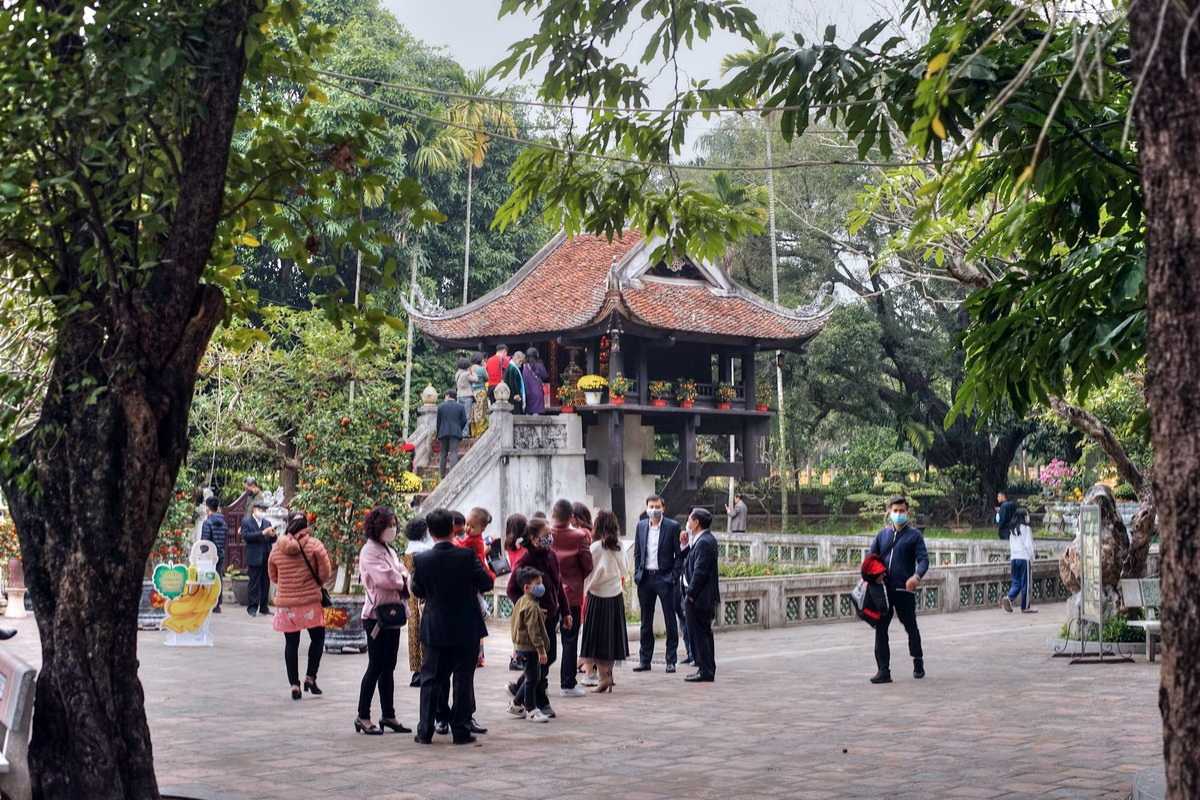
Destruction and Reconstruction
Over time, the One Pillar Pagoda endured significant challenges, including damage sustained during the French Colonial Period. Colonial conflicts and neglect caused structural deterioration that threatened the pagoda’s survival. However, the resilience of Vietnamese culture led to a faithful reconstruction in 1955, which restored the pagoda’s original design and preserved its spiritual and historical essence. This restoration project is a symbol of cultural preservation and national pride, allowing modern visitors to experience the pagoda much as it appeared centuries ago. The ongoing preservation efforts underscore the pagoda’s enduring significance in Vietnam’s heritage.
French Colonial Period Damage
During the French Colonial Period, the One Pillar Pagoda suffered considerable damage. The colonial era was marked by conflict and changes in governance that negatively impacted many Vietnamese cultural sites. The pagoda’s wooden structure was particularly vulnerable, and neglect led to deterioration. Understanding this period is crucial to appreciating the efforts made later to restore and protect this important cultural landmark.
1955 Reconstruction and Architectural Restoration
In 1955, a comprehensive restoration effort rebuilt the One Pillar Pagoda with attention to historical accuracy and architectural integrity. Skilled craftsmen worked to revive the original wooden design perched on its iconic single stone pillar, reinforcing the pagoda’s structural stability while preserving its spiritual symbolism. This reconstruction symbolizes Vietnam’s dedication to safeguarding cultural heritage and offers visitors an authentic glimpse into the nation’s past.
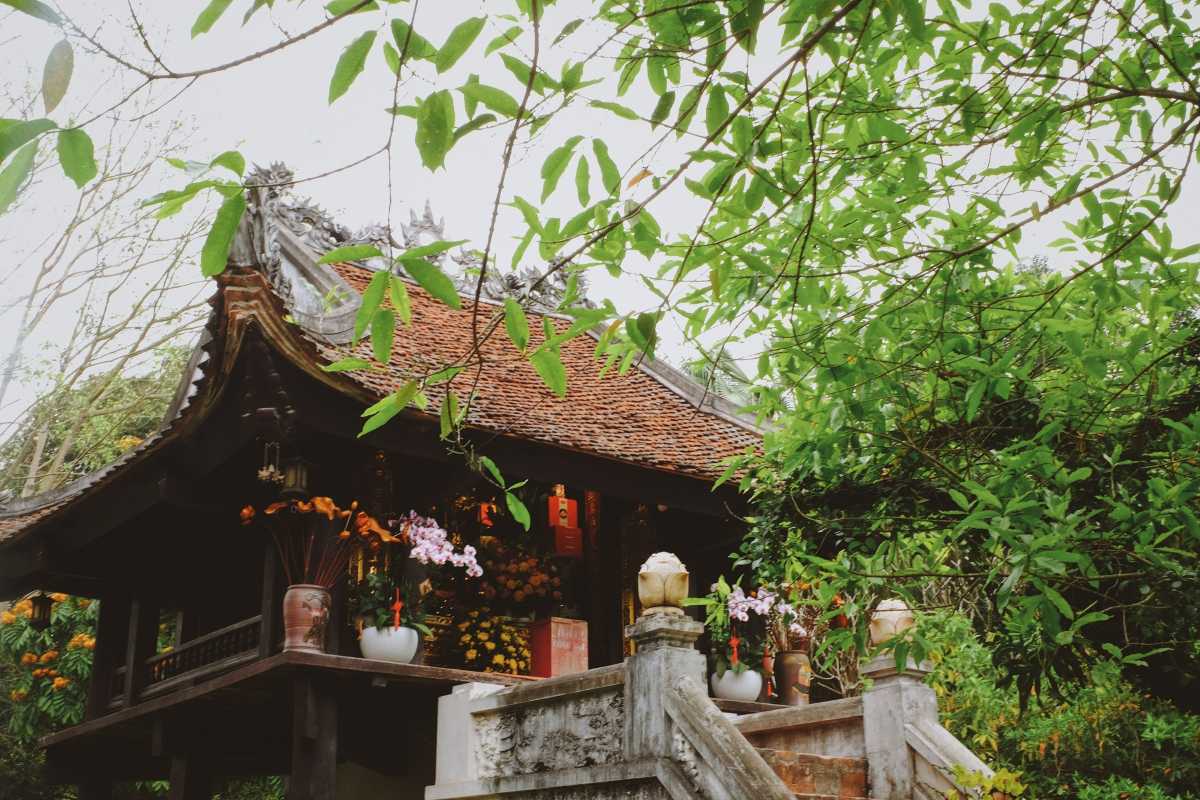
Role in Vietnamese Buddhist Tradition
The One Pillar Pagoda remains a vital part of Vietnamese Buddhism, serving as a site of worship, pilgrimage, and cultural reverence. It embodies spiritual heritage and reflects the enduring Buddhist practices that have shaped the region’s identity. Devotees visit to offer prayers and participate in ceremonies, continuing centuries-old traditions. The pagoda’s religious significance extends beyond architecture, representing faith, hope, and national pride in the context of Vietnamese Buddhism.
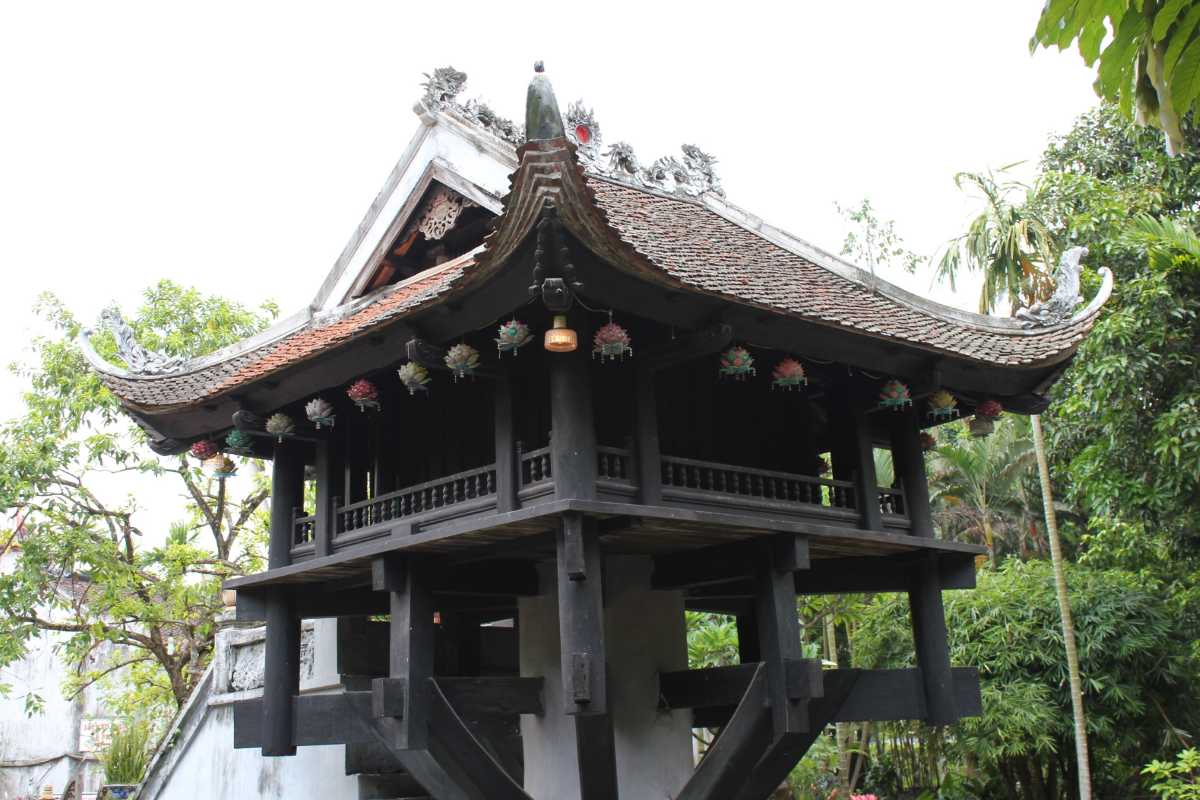
Architectural and Artistic Details
The One Pillar Pagoda is renowned for its unique architectural design and deep artistic symbolism. Situated in Hanoi, this structure is a masterpiece of Vietnamese craftsmanship and religious expression. Its design reflects centuries-old Buddhist symbolism, especially the lotus flower, which signifies purity and spiritual enlightenment. The pagoda’s wooden construction atop a single stone pillar demonstrates the traditional building techniques of the region, making it both an architectural marvel and a cultural treasure. Exploring the architectural and artistic details reveals why this pagoda stands out among Vietnam’s historic landmarks.
Plan your visit to the One Pillar Pagoda to witness this blend of art, faith, and history firsthand.
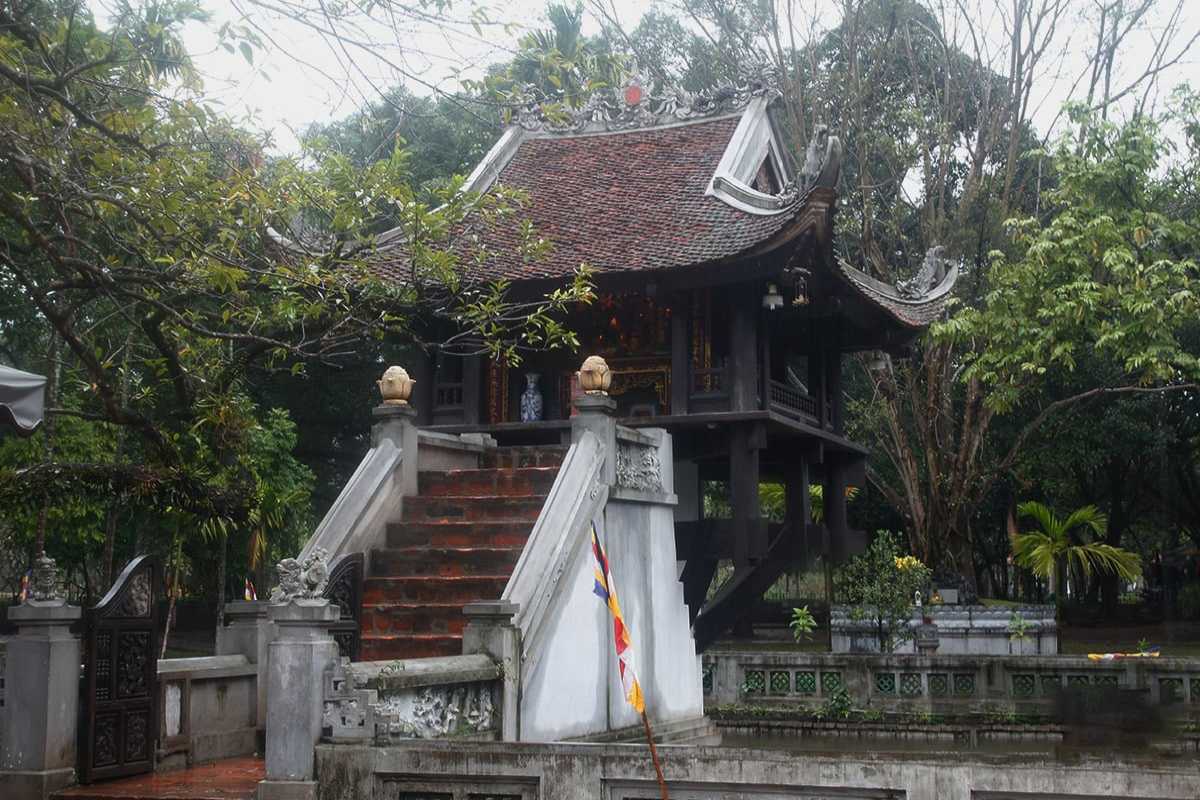
Design Elements and Symbolism
The One Pillar Pagoda incorporates several distinctive design elements that embody Buddhist symbolism and cultural meaning. Its core feature—the single pillar rising from a lotus pond—represents spiritual purity and enlightenment. The pagoda’s architecture is designed to evoke a lotus flower, a symbol deeply revered in Buddhism across Vietnam. This symbolism is complemented by traditional wooden construction techniques that emphasize harmony with nature and spiritual ideals. Visitors gain a vivid sense of the pagoda’s sacred purpose through its symbolic design and serene setting.
- The single pillar symbolizes stability and spiritual ascent.
- The lotus flower stands for purity, renewal, and enlightenment.
- The wooden structure reflects traditional Vietnamese architectural values.
Discover the spiritual meanings behind the pagoda’s design and let its symbolism enrich your visit to the One Pillar Pagoda.
Single Pillar Structure and Lotus Flower Representation
The defining feature of the One Pillar Pagoda is its single stone pillar supporting a wooden temple designed to resemble a lotus flower rising from water. This design conveys the Buddhist ideals of purity and spiritual awakening, as the lotus blooms beautifully above muddy waters, symbolizing transcendence. The structure’s simplicity and elegance embody the core values of Vietnamese religious art, offering visitors a visual representation of enlightenment and hope.
- Single pillar: Emphasizes spiritual support and enlightenment.
- Lotus flower symbolism: Represents purity, renewal, and spiritual growth.
- Vietnamese religious art: Integrates cultural motifs with spiritual meaning.
Understanding this symbolism provides deeper appreciation during your visit to the One Pillar Pagoda in Hanoi.
Materials and Construction Techniques
The pagoda’s construction reflects the use of traditional Vietnamese materials and building methods. Primarily made of wood, the temple rests on a stone pillar that supports the entire structure above a lotus pond. The craftsmanship involves intricate joinery techniques without nails, showcasing the skills passed down through generations. This approach not only ensures durability but also preserves the pagoda’s cultural authenticity and spiritual atmosphere.
- Wood: Used extensively for the temple’s framework and decorative elements.
- Stone pillar: Provides a stable foundation symbolizing strength.
- Traditional techniques: Include precise joinery and architectural styles unique to Vietnam.
Explore the craftsmanship behind the One Pillar Pagoda to appreciate its blend of art, tradition, and engineering.
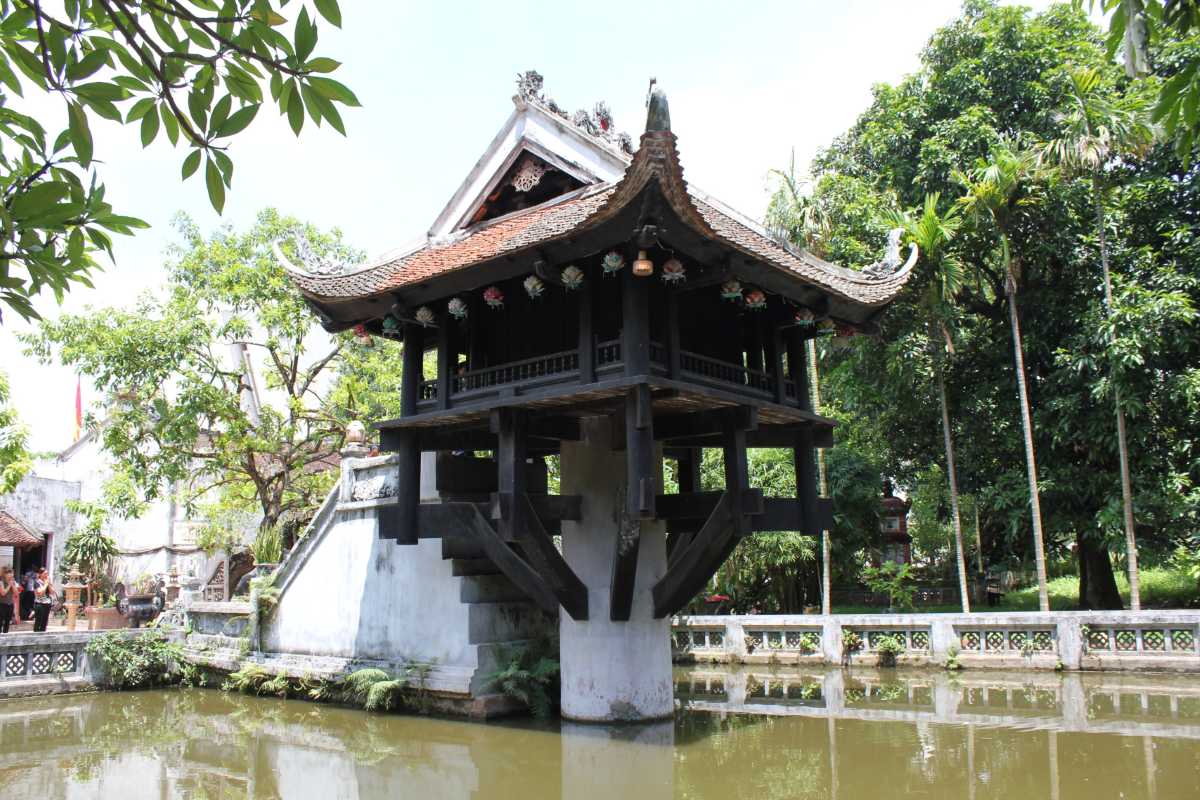
Surrounding Landscape and Lotus Pond
The One Pillar Pagoda is beautifully set within a tranquil lotus pond that enhances its symbolic and visual impact. The pond, filled with blooming lotus flowers, surrounds the pagoda, reinforcing the spiritual meaning of purity and enlightenment central to Buddhist philosophy. This carefully designed landscape creates a peaceful environment that invites reflection and serenity. Traditional Vietnamese garden elements complement the setting, blending natural beauty with religious symbolism. Visitors can admire the harmony between architecture and nature, which together form a sacred space that enriches the overall experience at the One Pillar Pagoda.
Plan your visit to the One Pillar Pagoda to enjoy the serene lotus pond and its symbolic surroundings.

Comparison with Other Buddhist Pagodas in Vietnam
Compared to other Buddhist pagodas in Vietnam, the One Pillar Pagoda stands out for its unique single-pillar design and deep symbolic meaning. While many pagodas feature multiple-tiered roofs and expansive complexes, this pagoda’s simplicity and elegant structure distinguish it architecturally and spiritually. Other famous pagodas, such as the Perfume Pagoda and Tran Quoc Pagoda, are larger and situated in different settings, each with their own historical and cultural significance. Understanding these differences highlights the One Pillar Pagoda’s special place in Vietnamese religious architecture and cultural heritage.
Explore the One Pillar Pagoda alongside other significant Buddhist temples to appreciate Vietnam’s diverse spiritual landmarks.

Visiting One Pillar Pagoda: Practical Information
Visiting the One Pillar Pagoda in Hanoi is straightforward with clear location details and various transportation options available. Situated in the Ba Dinh District, the pagoda is easily accessible whether you prefer public transit, taxi, or walking from nearby landmarks. Knowing the pagoda’s opening hours, entrance fees, and accessibility features will help you plan a smooth and enjoyable visit. This practical guide covers everything you need to know to make the most of your time at this iconic site.
Plan your visit to the One Pillar Pagoda with confidence, using these tips to navigate and prepare for your trip.

Location and How to Get There
Knowing how to get to One Pillar Pagoda is key to an efficient visit. The pagoda is located in the Ba Dinh District of Hanoi, close to major attractions such as the Ho Chi Minh Mausoleum. Public transport options include several bus routes stopping nearby, while taxis and ride-hailing services like Grab offer convenient direct access. Walking from prominent landmarks is also a pleasant way to reach the pagoda while exploring the district’s cultural sites.
- The pagoda is in Ô Chợ Dừa Ward, Đống Đa District, Hanoi.
- Multiple bus lines serve the area, connecting to central Hanoi.
- Grab and other ride-hailing services provide easy taxi alternatives.
- Walking routes from nearby attractions enhance your sightseeing experience.
Explore the best ways to reach the One Pillar Pagoda and tailor your trip according to your preferences.
Address and Coordinates
For accurate navigation, the One Pillar Pagoda is located at:
- Address: Đội Cấn Street, Ba Đình District, Hanoi, Vietnam
- Coordinates: Latitude 21.0365° N, Longitude 105.8358° E
This precise information helps visitors use GPS devices or map apps to find the pagoda without hassle.
Public Transport Options and Taxi Services
Getting to the One Pillar Pagoda is convenient via public transportation and taxi services:
- Bus Lines: Routes 09, 22, and 32 stop near the pagoda, connecting it to other key points in Hanoi.
- Taxi Services: Traditional taxis operate widely; expect reasonable fares from city center areas.
- Ride-Hailing: Grab and other app-based services offer efficient, cashless transport.
- Accessibility: Public transit and taxis provide budget-friendly options ideal for solo travelers and families alike.
Use these transport methods to reach the One Pillar Pagoda comfortably and economically.
Walking Routes from Nearby Landmarks
If you prefer walking, several scenic routes lead to the One Pillar Pagoda from notable nearby attractions:
- From Ho Chi Minh Mausoleum: Head east on Điện Biên Phủ Street, then turn south on Đội Cấn Street; approximately a 10-minute walk.
- From Ba Dinh Square: Walk northeast along Lê Thánh Tông Street toward Đội Cấn Street, enjoying views of historic government buildings.
- Walking tours in the Ba Dinh District provide an immersive cultural experience, combining visits to the pagoda with other landmarks.
Walking to the pagoda allows for a deeper connection with the area’s history and atmosphere.
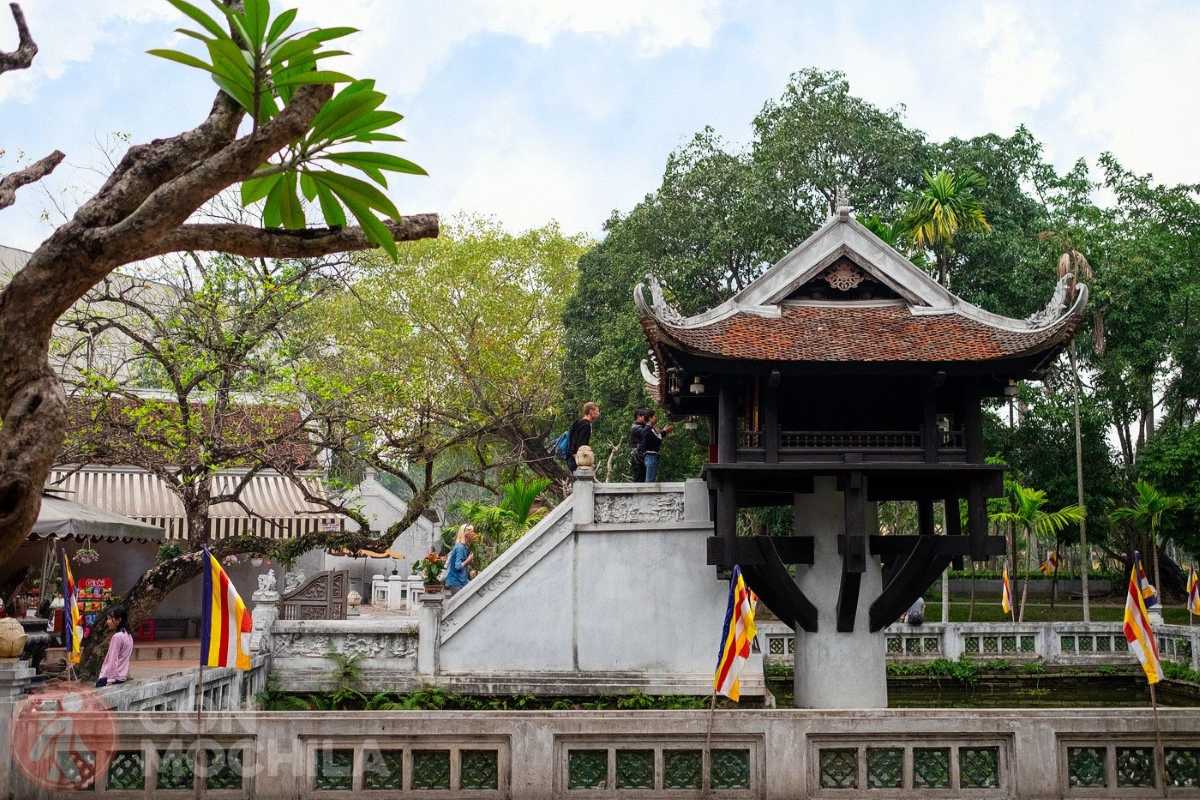
Opening Hours and Admission Policy
The One Pillar Pagoda is open to visitors daily, typically from 8:00 AM to 5:00 PM. These hours allow ample time to explore the site during daylight and enjoy its serene atmosphere. Admission to the pagoda is generally free, reflecting its status as a public religious and cultural landmark. However, visitors are encouraged to respect any local guidelines or occasional special entry rules during festivals or events. Knowing the opening hours and admission policies helps you plan your visit effectively and avoid disappointment.
Make sure to check the current visiting hours before your trip to the One Pillar Pagoda to ensure a smooth experience.
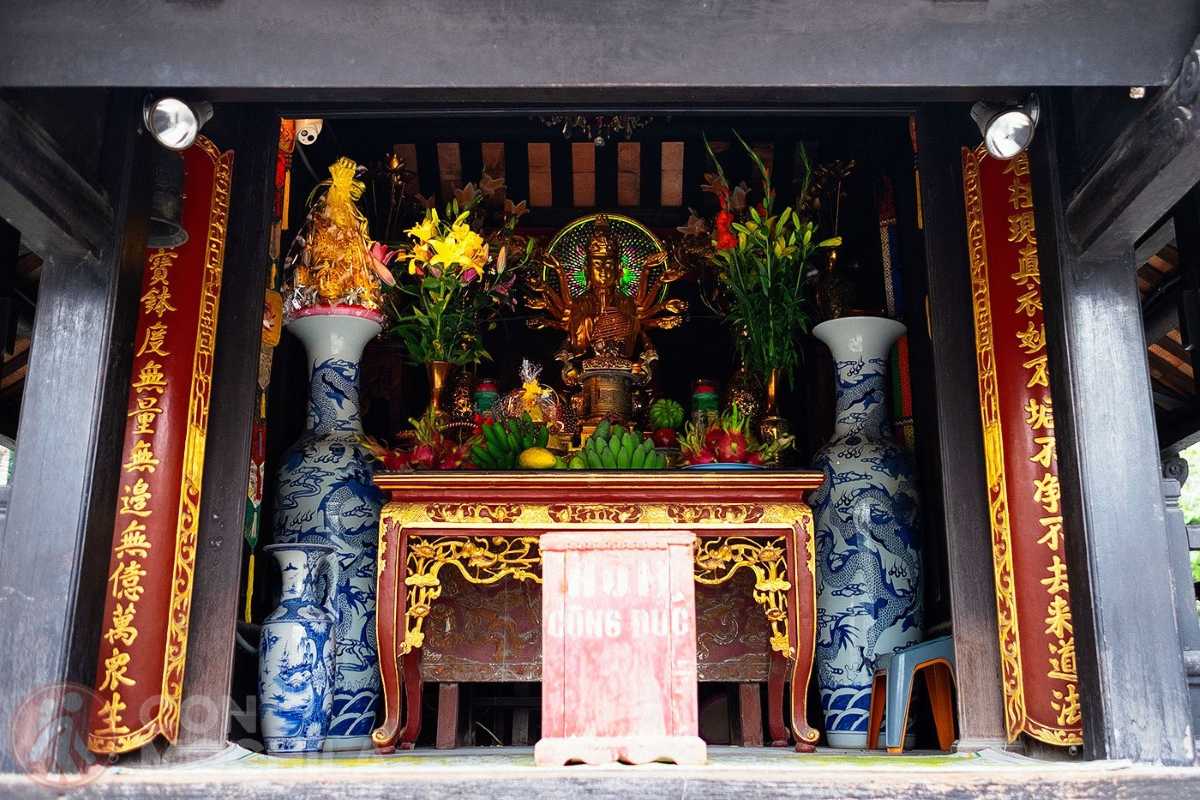
Accessibility Considerations
The One Pillar Pagoda strives to accommodate all visitors, including those with mobility challenges. While the pagoda’s historic design includes steps and narrow walkways, nearby areas provide accessible paths and seating for rest. Facilities such as ramps and handrails may be limited due to the traditional architecture. Visitors with disabilities are advised to prepare accordingly and may contact local guides or Asia Travel Links for assistance in planning an accessible visit.
Understanding accessibility features ensures everyone can enjoy the spiritual and cultural significance of the One Pillar Pagoda comfortably.
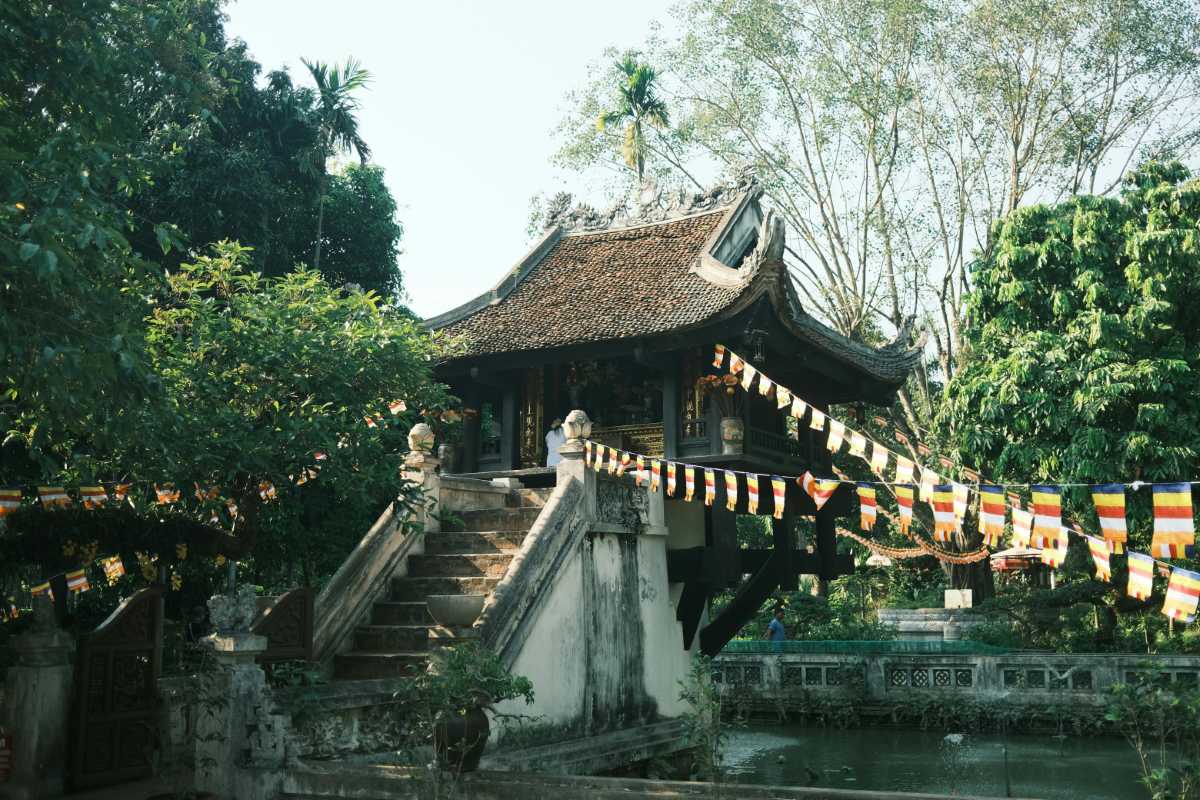
Entrance Fees and Donations
Visiting the One Pillar Pagoda does not require an entrance fee, making it accessible to all travelers interested in cultural exploration. However, visitors often have the option to leave donations, which contribute to the pagoda’s upkeep and support ongoing preservation efforts. Donations are voluntary but appreciated by the caretakers. Being informed about these policies allows you to plan your visit without unexpected costs while contributing respectfully if you wish.
Prepare for your visit knowing that the One Pillar Pagoda welcomes all without mandatory fees, fostering open cultural access.
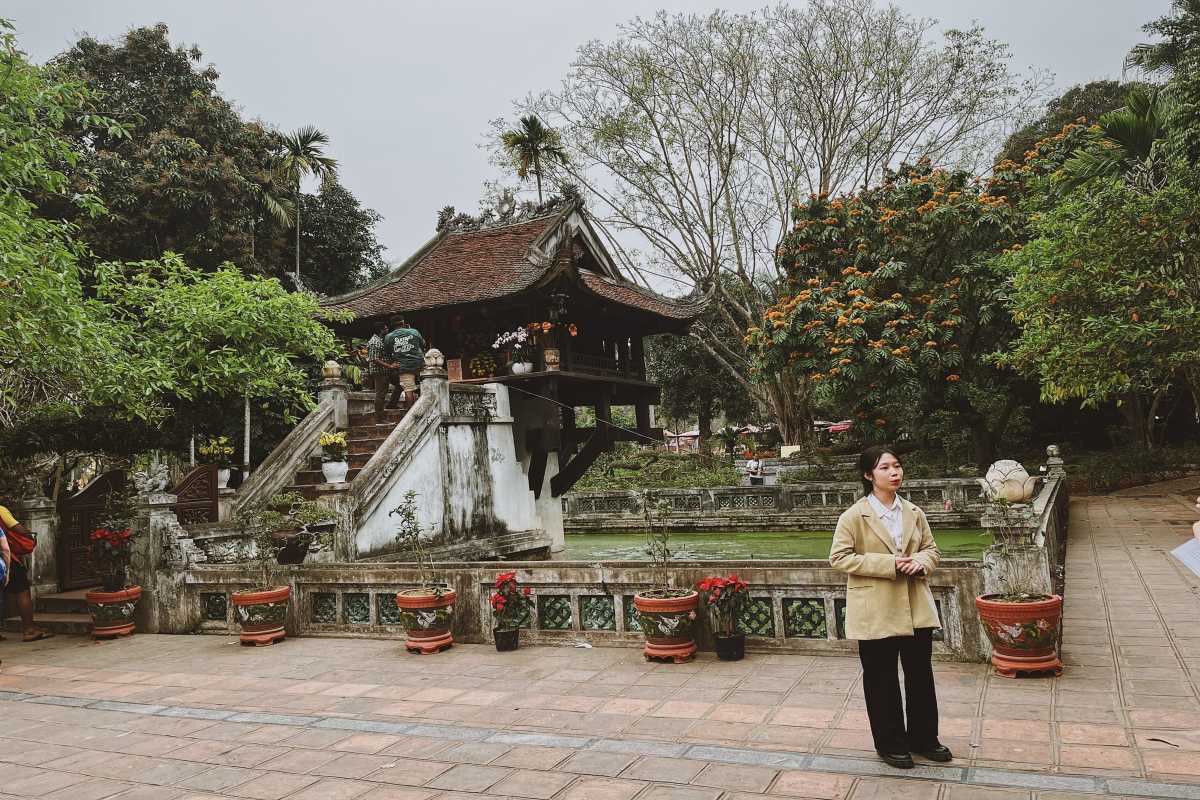
Best Time to Visit and Avoid Crowds
To fully appreciate the tranquility of the One Pillar Pagoda, plan your visit during early mornings or late afternoons when visitor numbers are lower. Weekdays tend to be less crowded than weekends, especially outside major Vietnamese holidays and festival seasons. Visiting during the dry season, typically from November to April, offers pleasant weather and better conditions for exploring the pagoda and its surroundings. Timing your visit thoughtfully enhances your experience, allowing for peaceful reflection and better photography opportunities.
Choose the best times to visit the One Pillar Pagoda for a more intimate and enjoyable cultural experience.
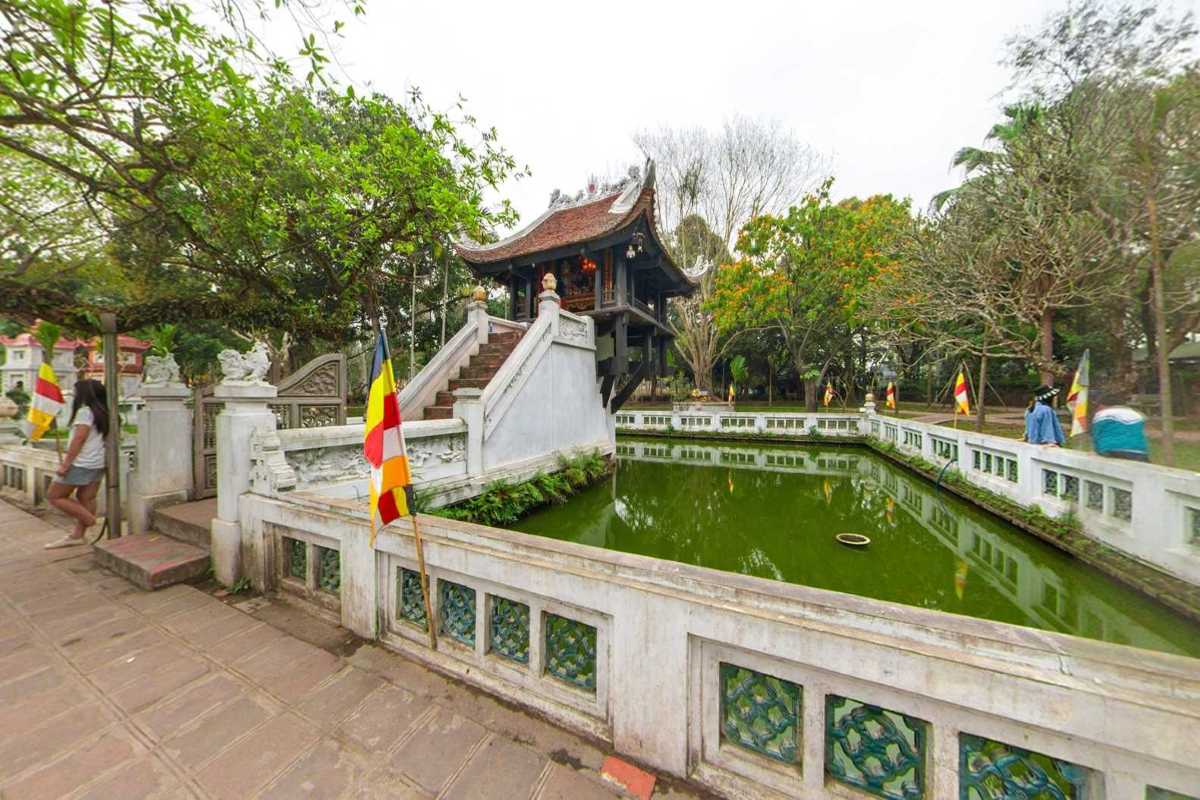
Things to Do at One Pillar Pagoda
The One Pillar Pagoda offers more than just a historic site to admire; it provides a rich variety of activities that engage visitors culturally and spiritually. Whether you're interested in sightseeing, photography, or participating in religious festivals, the pagoda presents opportunities to connect with Vietnam’s heritage deeply. Nearby attractions like the Ho Chi Minh Mausoleum, Hanoi Opera House, and the Vietnam Fine Arts Museum complement your visit, creating a well-rounded cultural experience in Hanoi. Discover meaningful ways to explore and appreciate this iconic landmark.
Make the most of your visit to the One Pillar Pagoda by exploring these enriching activities.

Sightseeing and Photography
Sightseeing at the One Pillar Pagoda reveals a blend of architectural beauty and serene natural surroundings, perfect for photography enthusiasts. The pagoda’s unique lotus-inspired design offers numerous angles for stunning photos, especially during early morning light or late afternoon. Visitors can capture the contrast between the wooden structure and the tranquil lotus pond, while the surrounding gardens provide picturesque backdrops. Use these tips to capture memorable images that highlight the pagoda’s elegance and spiritual ambiance.
- Visit during golden hours for soft, natural lighting.
- Explore different vantage points around the lotus pond.
- Include surrounding greenery to frame your shots beautifully.
Capture the timeless beauty of the One Pillar Pagoda through your lens for a lasting travel memory.

Participating in Religious Practices and Festivals
Visitors to the One Pillar Pagoda can immerse themselves in the spiritual life of the site by observing or participating in traditional Buddhist ceremonies and festivals. The pagoda hosts important events such as the Tet Lunar New Year, Vesak (Buddha’s birthday), and celebrations honoring Avalokiteshvara, the Bodhisattva of Compassion. These occasions are marked by prayer offerings, chanting, and community gatherings, reflecting deep cultural heritage. Engaging in these events offers authentic insight into Vietnamese religious traditions and fosters meaningful connections with local worshippers.
Plan your visit around these festivals to experience the vibrant spiritual atmosphere of the One Pillar Pagoda.
Buddhist Ceremonies and Offerings
Typical Buddhist ceremonies at the One Pillar Pagoda include ritual offerings, incense burning, and chanting led by monks. Visitors may witness devotees presenting lotus flowers and candles as symbols of respect and spiritual aspiration. These ceremonies often follow traditional protocols and are held on auspicious days aligned with the Buddhist calendar. Observing or respectfully joining these rituals enriches your understanding of the pagoda’s spiritual role and the devotion of the local community.
- Offerings: Lotus flowers, incense sticks, candles.
- Rituals: Chanting sessions led by monks.
- Timing: Regular ceremonies during major Buddhist holidays.
Experience the reverence and tranquility of Buddhist rituals at the One Pillar Pagoda.
Important Festival Dates (Tet, Vesak, Avalokiteshvara’s Birthday)
Key festivals at the One Pillar Pagoda offer unique cultural experiences:
- Tet Festival: The Vietnamese Lunar New Year celebration with prayers for prosperity and health.
- Vesak Festival: Commemorates Buddha’s birth, enlightenment, and passing with vibrant ceremonies.
- Avalokiteshvara’s Birthday: Honors the Bodhisattva of Compassion with special offerings and rituals.
These events attract both locals and tourists, providing vibrant displays of faith and tradition. Scheduling your visit during these dates allows you to witness the pagoda’s lively spiritual celebrations.

Guided Tours and Educational Experiences
To enrich your visit to the One Pillar Pagoda, consider joining guided tours or educational experiences that provide deeper insights into its history, architecture, and cultural significance. Guided tours in Hanoi often include expert commentary that brings the site’s stories to life, enhancing your understanding and appreciation. These tours can be booked through local operators or trusted platforms, offering a structured and informative visit. Choosing a guided experience allows you to explore the pagoda with knowledgeable guides who share rich cultural context and answer your questions.
Discover guided tours and educational opportunities to get the most from your visit to the One Pillar Pagoda.
Available Tour Options and Booking Tips
Popular tours to the One Pillar Pagoda include:
- Group cultural tours covering multiple Hanoi landmarks.
- Private guided visits focusing on Buddhist history and architecture.
- Combination tours with nearby attractions such as the Ho Chi Minh Mausoleum.
Booking tips:
- Use reputable tour operators for guaranteed quality.
- Book online in advance to secure your spot, especially during peak seasons.
- Contact Asia Travel Links for trusted tour options and personalized itinerary planning.
With reliable booking and tour information, your visit will be seamless and memorable.
Self-Guided Visit Recommendations
If you prefer exploring independently, here are tips for a fulfilling self-guided visit to the One Pillar Pagoda:
- Download travel apps with audio guides and maps for Hanoi.
- Start early to avoid crowds and enjoy a peaceful atmosphere.
- Read about the pagoda’s history beforehand to enrich your experience.
- Combine your visit with nearby sites for a well-rounded itinerary.
Following these recommendations helps you navigate the One Pillar Pagoda at your own pace while gaining meaningful insights.

Nearby Attractions to Combine with Your Visit
When visiting the One Pillar Pagoda, consider exploring nearby cultural and historical sites to enrich your trip. These attractions provide diverse experiences, from political history to architectural beauty and artistic heritage. Including these destinations in your itinerary offers a fuller understanding of Hanoi’s rich past and vibrant culture.
Plan your visit to include these top nearby attractions for a comprehensive Hanoi experience.
Ho Chi Minh Mausoleum Complex
The Ho Chi Minh Mausoleum Complex is a significant political and cultural site near the pagoda. It houses the embalmed body of Ho Chi Minh, Vietnam’s revolutionary leader. The complex includes the Presidential Palace, Ho Chi Minh’s Stilt House, and the One Pillar Pagoda itself, making it a must-see area that provides historical context and insight into Vietnam’s modern history.
Visiting this complex alongside the One Pillar Pagoda offers a deep dive into Vietnamese heritage.
Hanoi Opera House and Ba Dinh Square
The Hanoi Opera House is an architectural gem reflecting French colonial influence, located near Ba Dinh Square, a key public space in the city. Both sites offer cultural richness, with the opera house hosting performances and the square serving as a hub for political and social gatherings. These locations complement a visit to the pagoda by adding artistic and civic dimensions to your exploration of Hanoi.
- Hanoi Opera House: Venue for classical music and cultural events.
- Ba Dinh Square: Historic square with monuments and government buildings.
Include these attractions in your Hanoi itinerary to enjoy cultural and leisure activities beyond the One Pillar Pagoda.
Vietnam Fine Arts Museum
The Vietnam Fine Arts Museum showcases a wide collection of Vietnamese art, from ancient sculptures to contemporary paintings. Located close to the pagoda, it offers visitors a chance to explore the artistic traditions and creative expressions of Vietnam. The museum enriches your cultural experience by highlighting the nation’s diverse artistic heritage.
Plan a visit to the Vietnam Fine Arts Museum to complement your spiritual journey at the One Pillar Pagoda.

Cultural and Spiritual Insights
The One Pillar Pagoda holds deep cultural and spiritual meaning in Vietnam, symbolizing Buddhist ideals and reflecting the country’s rich religious heritage. Its architecture and setting convey important Buddhist symbolism that resonates with local beliefs and traditions. Understanding the stories and folklore surrounding the pagoda enriches your visit, while observing proper cultural etiquette ensures respectful engagement with this sacred site. These insights offer a meaningful connection to Vietnam’s spiritual landscape and encourage thoughtful appreciation.
Gain a deeper understanding of the One Pillar Pagoda’s cultural and spiritual significance to enhance your visit.

Buddhist Symbolism of the Pagoda
The architecture of the One Pillar Pagoda embodies key Buddhist symbolism. The lotus flower design represents purity and spiritual enlightenment, central concepts in Buddhism practiced in Vietnam. The pagoda’s structure serves as a physical manifestation of these spiritual ideals, inviting visitors to reflect on enlightenment and renewal. Symbols throughout the pagoda, including the single pillar and lotus pond, connect deeply with Buddhist iconography and cultural spirituality.
- Lotus symbolism: Represents purity emerging from murky waters.
- Buddhist iconography: Spiritual symbols embedded in architecture.
- Enlightenment themes: Central to Vietnamese Buddhism and cultural heritage.
Explore the rich Buddhist symbolism that shapes the One Pillar Pagoda’s spiritual message.

Role in Local Beliefs and Traditions
The One Pillar Pagoda plays a significant role in local Vietnamese religious practices and community traditions. It is a site of pilgrimage where worshippers seek blessings and spiritual guidance. The pagoda’s presence strengthens community bonds through shared rituals and festivals rooted in centuries-old customs. These practices reflect the enduring influence of Buddhism in daily life and the cultural identity of the region.
Understanding the pagoda’s role in local beliefs adds depth to your visit and appreciation of Vietnamese spiritual heritage.

Stories and Folklore Associated with the Site
The One Pillar Pagoda is steeped in legends and folklore that enrich its cultural narrative. One famous story tells of Emperor Lý Thái Tông’s dream of the bodhisattva offering a lotus, inspiring the pagoda’s design. Such tales blend history with myth, offering visitors a glimpse into the spiritual imagination of ancient Vietnam. These narratives invite emotional engagement and intellectual curiosity, connecting visitors to the pagoda’s mystical heritage.
Delve into the captivating stories and folklore that make the One Pillar Pagoda a treasured cultural landmark.

Tips for Respectful Visiting and Cultural Etiquette
When visiting the One Pillar Pagoda, it is important to observe respectful behaviors that honor the site’s cultural and religious significance:
- Dress modestly and appropriately.
- Remove shoes before entering prayer areas.
- Speak softly and avoid disruptive behavior.
- Refrain from touching sacred objects unless permitted.
- Follow any posted guidelines or instructions from caretakers.
Practicing these customs ensures a positive experience for both visitors and worshippers, fostering cultural respect and spiritual harmony.
Respectful visiting enhances your connection to the One Pillar Pagoda and its sacred atmosphere.

Conservation and Preservation Efforts
The One Pillar Pagoda is protected as a vital cultural and historical landmark in Vietnam, with ongoing efforts to preserve its structure and heritage. Recognized as a national heritage site, the pagoda benefits from legal protections and conservation programs aimed at safeguarding its longevity. Restoration activities and sustainable tourism practices ensure the pagoda remains intact for future generations. These preservation efforts reflect a commitment to maintaining the site’s cultural significance and architectural integrity.
Understanding these efforts highlights the importance of protecting the One Pillar Pagoda as a treasured symbol of Vietnamese heritage.

Protection as a National Heritage Site
The One Pillar Pagoda holds the status of a protected national heritage site in Vietnam, ensuring its cultural and historical value is legally recognized. This designation enforces regulations to maintain the site’s authenticity and prevent unauthorized alterations. The heritage status also attracts governmental support for ongoing preservation and raises public awareness about the pagoda’s importance within Vietnam’s cultural landscape.
This formal protection safeguards the One Pillar Pagoda for both current visitors and future generations.

Ongoing Restoration and Maintenance Activities
Active restoration and maintenance work are essential for preserving the One Pillar Pagoda’s historic structure. These efforts include regular inspections, repairs to wooden elements, and preservation of the stone pillar foundation. Conservation projects are often supported by cultural organizations and government agencies dedicated to maintaining Hanoi’s architectural heritage. Routine upkeep ensures the pagoda’s stability and aesthetic appeal while respecting its original design.
Key restoration activities include:
- Wood treatment and repairs to prevent decay.
- Structural reinforcement of the stone pillar.
- Preservation of surrounding landscape features.
These maintenance practices uphold the One Pillar Pagoda’s legacy as a cultural icon.

Managing Tourist Impact and Sustainability Practices
To protect the One Pillar Pagoda from damage caused by high visitor numbers, management employs sustainable tourism practices. These include visitor flow control, educational signage promoting respectful behavior, and limitations on access to sensitive areas. Local authorities and caretakers encourage eco-friendly conduct to minimize environmental impact. Balancing tourism and conservation helps maintain the pagoda’s integrity while allowing visitors to experience its cultural value responsibly.
Sustainability strategies at the pagoda involve:
- Controlled visitor numbers during peak times.
- Awareness campaigns about cultural respect.
- Eco-friendly maintenance and waste management.
Responsible tourism supports the long-term preservation of the One Pillar Pagoda.

Community and Government Roles in Preservation
The preservation of the One Pillar Pagoda is a collaborative effort between local communities and government bodies in Vietnam. Community members participate in cultural stewardship by supporting festivals and maintenance activities. Government agencies provide legal frameworks, funding, and expertise to manage the site effectively. This partnership ensures the pagoda’s cultural heritage is respected and maintained, fostering a sense of shared responsibility and pride.
Examples of stewardship include:
- Community-led cultural events supporting the site.
- Government heritage management programs.
- Joint initiatives for educational outreach.
This cooperative preservation secures the One Pillar Pagoda’s future as a national treasure.

Travel Tips and Recommendations
Visiting the One Pillar Pagoda is an enriching experience that can be enhanced by practical preparation and thoughtful planning. Knowing what to wear, the best times to visit, and how to combine the pagoda with other Hanoi attractions will help you enjoy your trip comfortably and respectfully. Insider tips offer unique perspectives that allow you to connect more deeply with the site and its cultural surroundings. These travel recommendations ensure your visit is smooth, memorable, and culturally sensitive.
Prepare well and explore the One Pillar Pagoda with confidence and respect.

What to Wear and Prepare for Your Visit
When visiting the One Pillar Pagoda, dressing modestly and comfortably is essential. Lightweight, breathable clothing is ideal for the tropical climate, while covering shoulders and knees shows respect for the religious site. Bring essentials such as a hat, sunscreen, and water to stay comfortable during your visit. Wearing appropriate footwear is important since you may need to remove shoes in some areas.
- Modest clothing covering shoulders and knees.
- Comfortable walking shoes.
- Sun protection and hydration essentials.
Dressing suitably ensures a respectful and pleasant visit to the One Pillar Pagoda.

Best Times of Day for Visiting and Photography
The best times to visit the One Pillar Pagoda are early morning and late afternoon when the light is soft and crowds are thinner. These times also offer ideal conditions for photography, with the golden hour providing warm, natural light that enhances the pagoda’s beauty. Weekdays are generally less busy than weekends, allowing for a more peaceful experience.
- Early morning: Peaceful atmosphere and soft light.
- Late afternoon: Golden hour for photos and cooler temperatures.
- Avoid public holidays to escape crowds.
Plan your visit during these hours for the best experience and photos at the One Pillar Pagoda.

Combining One Pillar Pagoda with a Hanoi Sightseeing Itinerary
Maximize your sightseeing in Hanoi by including the One Pillar Pagoda alongside nearby landmarks like the Ho Chi Minh Mausoleum, Hanoi Opera House, and Ba Dinh Square. A well-planned itinerary allows you to experience the city’s cultural richness efficiently, balancing spiritual, historical, and artistic sites.
Suggested itinerary highlights:
- Morning: Visit the One Pillar Pagoda and Ho Chi Minh Mausoleum.
- Afternoon: Explore Hanoi Opera House and Ba Dinh Square.
- Evening: Optional visit to local markets or museums.
This itinerary combines iconic attractions to provide a comprehensive cultural journey through Hanoi.

Insider Tips for a Unique Experience
To enjoy a unique and authentic visit to the One Pillar Pagoda, consider these insider tips:
- Visit early morning or late afternoon to avoid crowds.
- Engage respectfully with local worshippers and observe rituals quietly.
- Explore lesser-known nearby spots in Ba Dinh District for a peaceful retreat.
- Use travel apps for self-guided tours and historical information.
These tips help you discover the One Pillar Pagoda beyond typical tourist paths, offering a more meaningful experience.
Visiting Early Morning or Late Afternoon
Visiting the One Pillar Pagoda early in the morning or late in the afternoon provides several benefits:
- Quieter surroundings for reflection and photography.
- Softer, more flattering natural light.
- Cooler temperatures for comfort.
Plan your visit during these times to optimize your experience.
Engaging with Local Worshippers Respectfully
When interacting with worshippers at the One Pillar Pagoda, follow these respectful guidelines:
- Maintain a quiet and calm demeanor.
- Ask permission before photographing individuals.
- Avoid interrupting rituals or prayers.
- Dress modestly to show respect.
These practices foster a positive cultural exchange and preserve the sanctity of the site.
Exploring Lesser-Known Nearby Spots
Enhance your visit by exploring hidden gems near the One Pillar Pagoda:
- Quiet temples and pagodas in the Ba Dinh District.
- Local parks and gardens away from tourist crowds.
- Authentic street food stalls offering traditional Vietnamese cuisine.
These lesser-known spots provide a peaceful complement to your cultural journey.

Conclusion
The One Pillar Pagoda stands as a timeless symbol of Vietnam’s rich cultural heritage and spiritual depth. Its unique architecture, historical significance, and vibrant traditions offer visitors an unforgettable glimpse into Hanoi’s past and present. Embracing the opportunity to explore this iconic site allows you to connect with the heart of Vietnamese culture and history.
Make the One Pillar Pagoda a key part of your journey and discover the heritage of Hanoi firsthand.

Summary of One Pillar Pagoda’s Importance
The One Pillar Pagoda reflects centuries of Vietnamese religious devotion, architectural innovation, and cultural storytelling. From its origins during the Lý Dynasty to its role in local Buddhist traditions, the pagoda remains a revered landmark. Its single-pillar design and lotus symbolism make it architecturally unique among historic sites in Hanoi and across Vietnam.
This remarkable pagoda continues to inspire reverence and admiration as a vital part of Vietnamese cultural heritage.

Encouragement to Visit and Explore Hanoi’s Heritage
Visiting the One Pillar Pagoda invites you to engage deeply with Hanoi’s spiritual and cultural legacy. Beyond the pagoda, the city offers a wealth of heritage sites, vibrant festivals, and rich traditions waiting to be explored. Planning your trip to include the One Pillar Pagoda will enrich your understanding of Vietnam’s history and leave you with lasting memories of this remarkable destination.
Take the step to explore the One Pillar Pagoda and immerse yourself in the heritage of Hanoi.
Mike Nguyen
Travel Advisor
Mobile: +84917506881 (whatsapp available)
Email: contact@asiatravellinks.com



